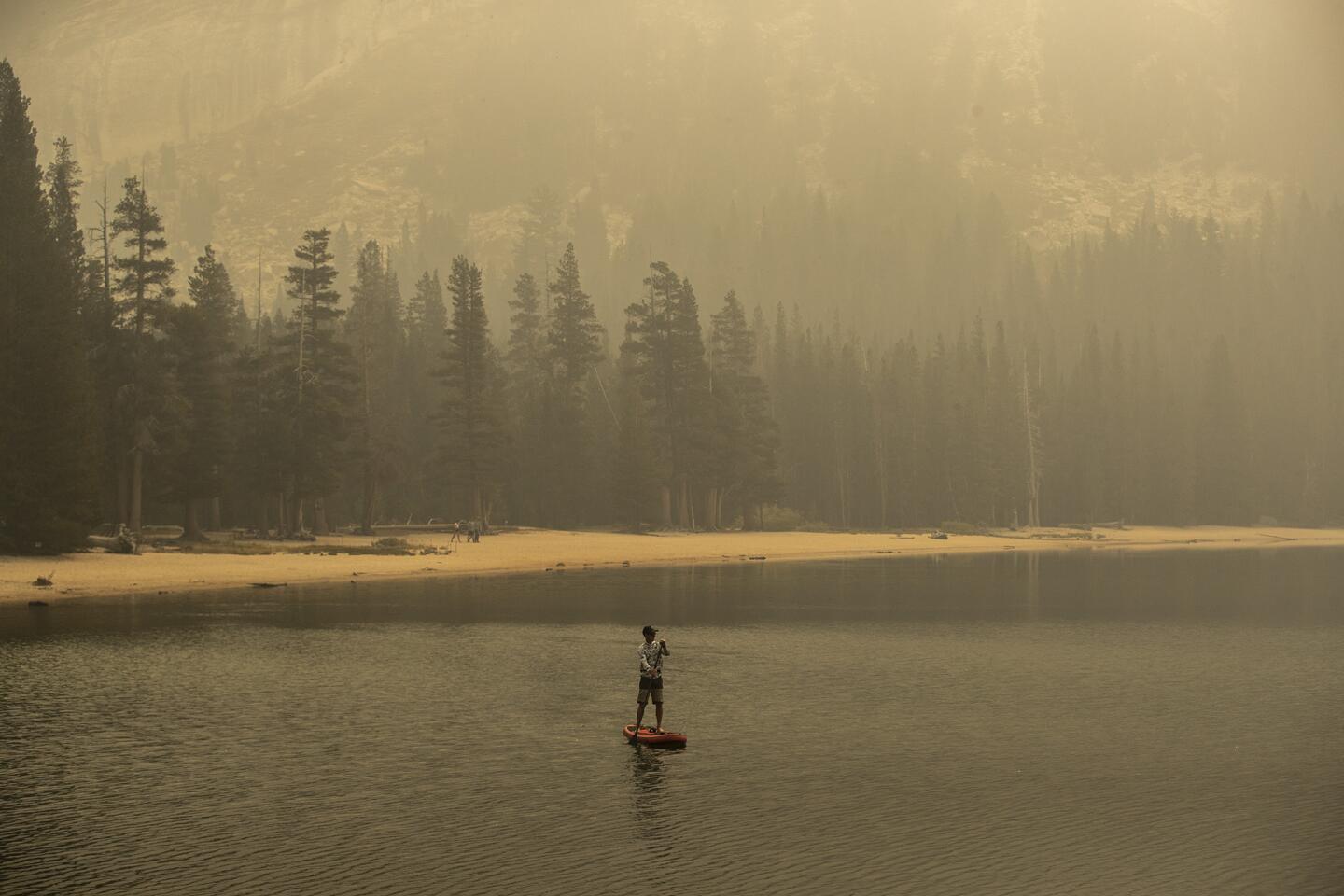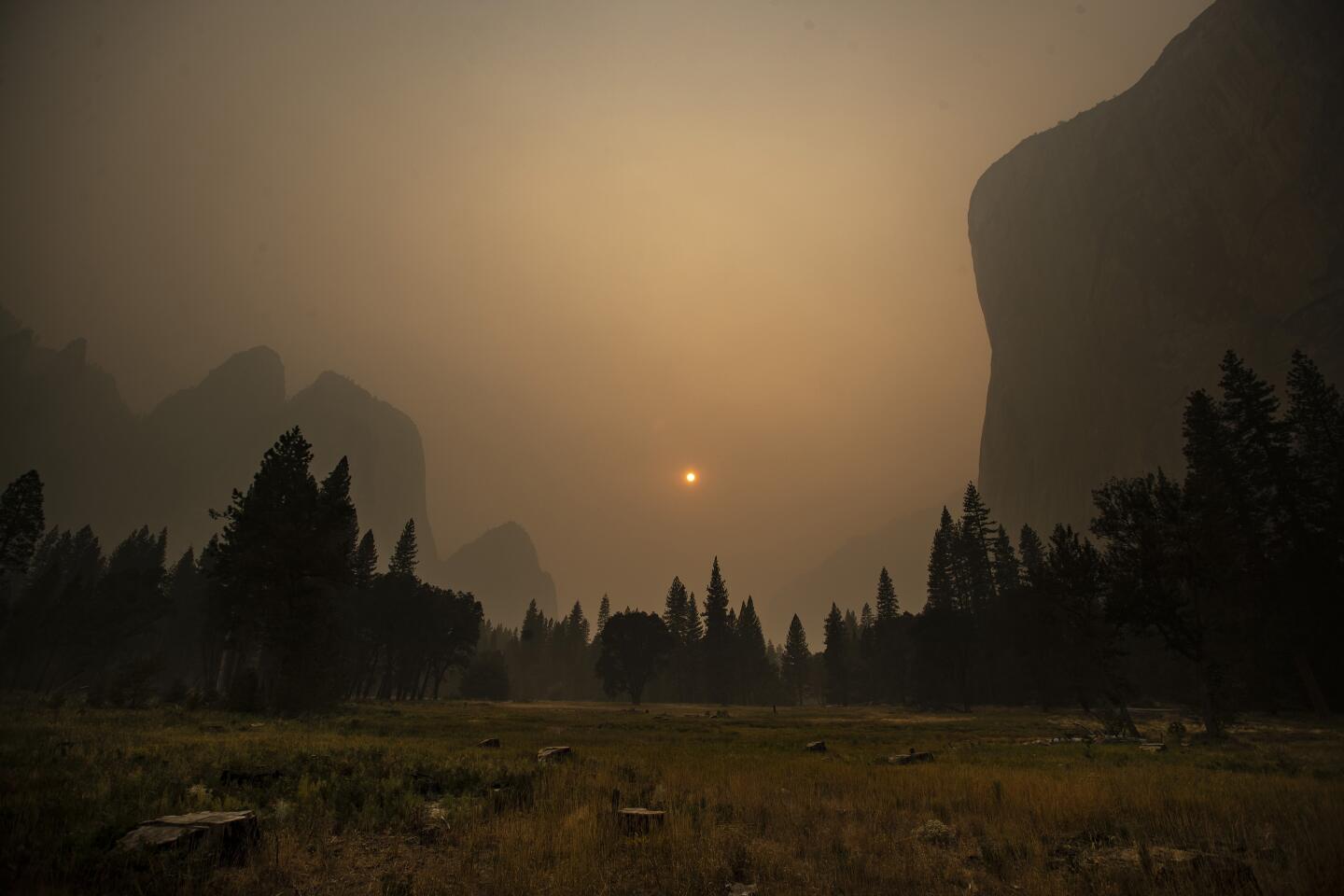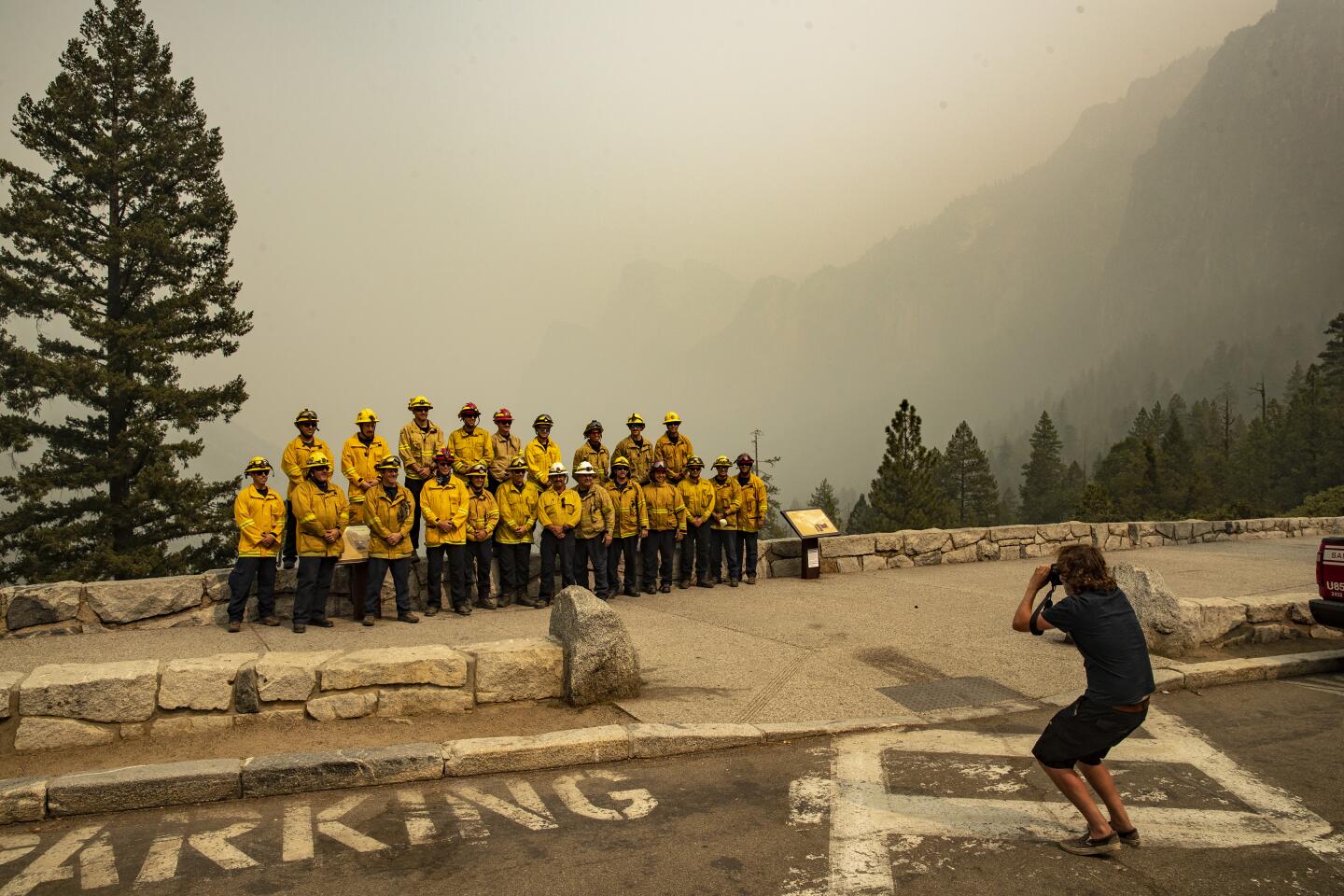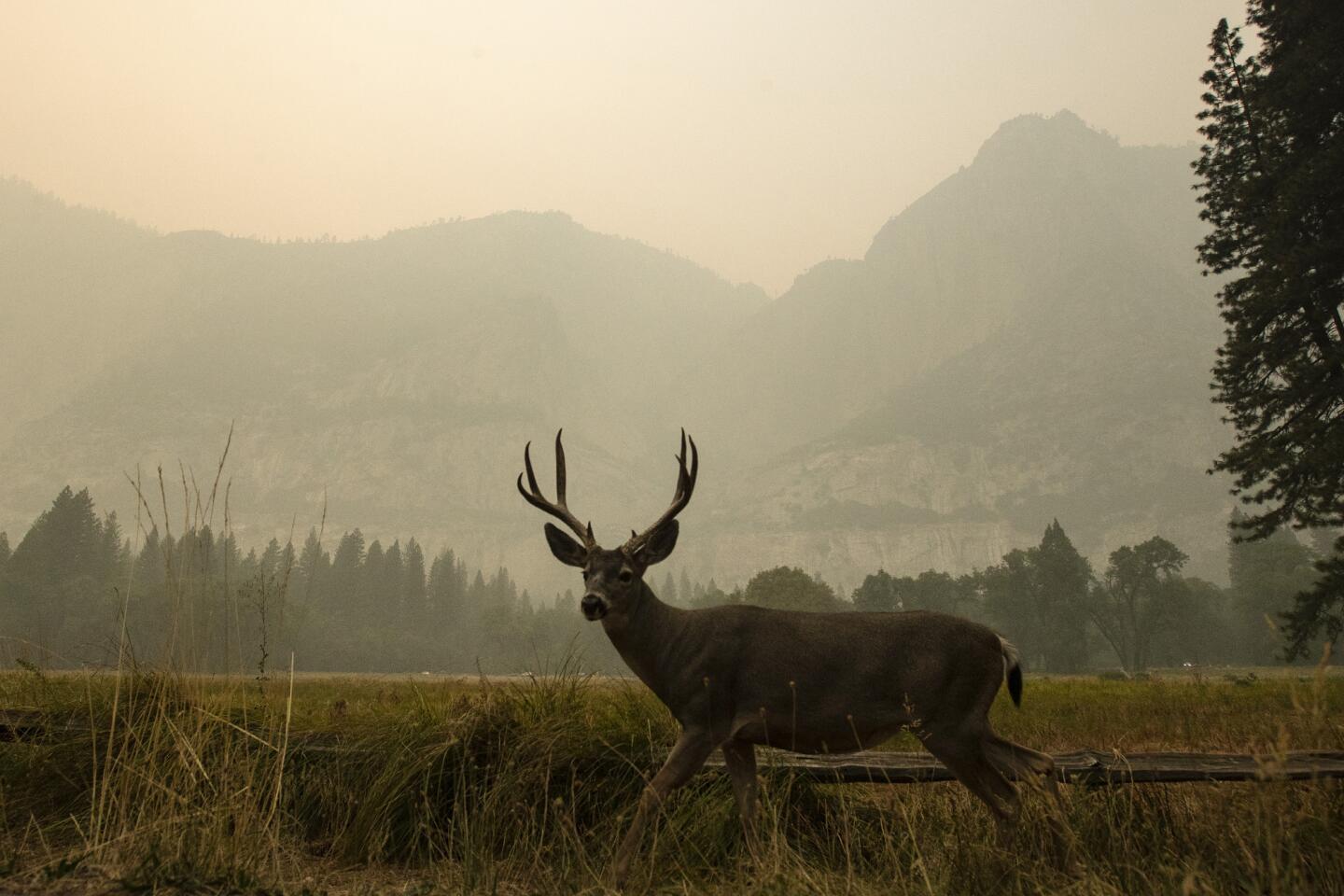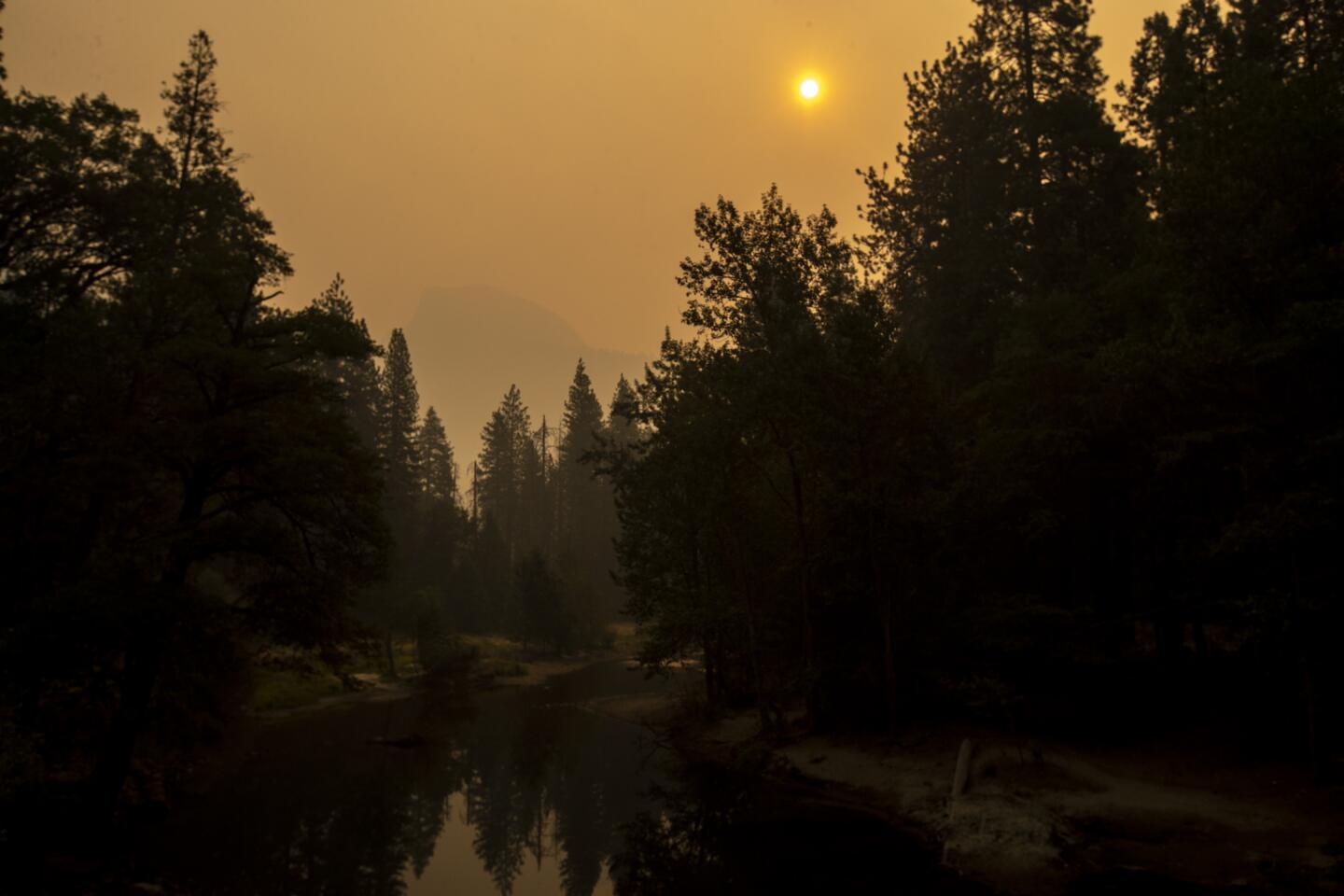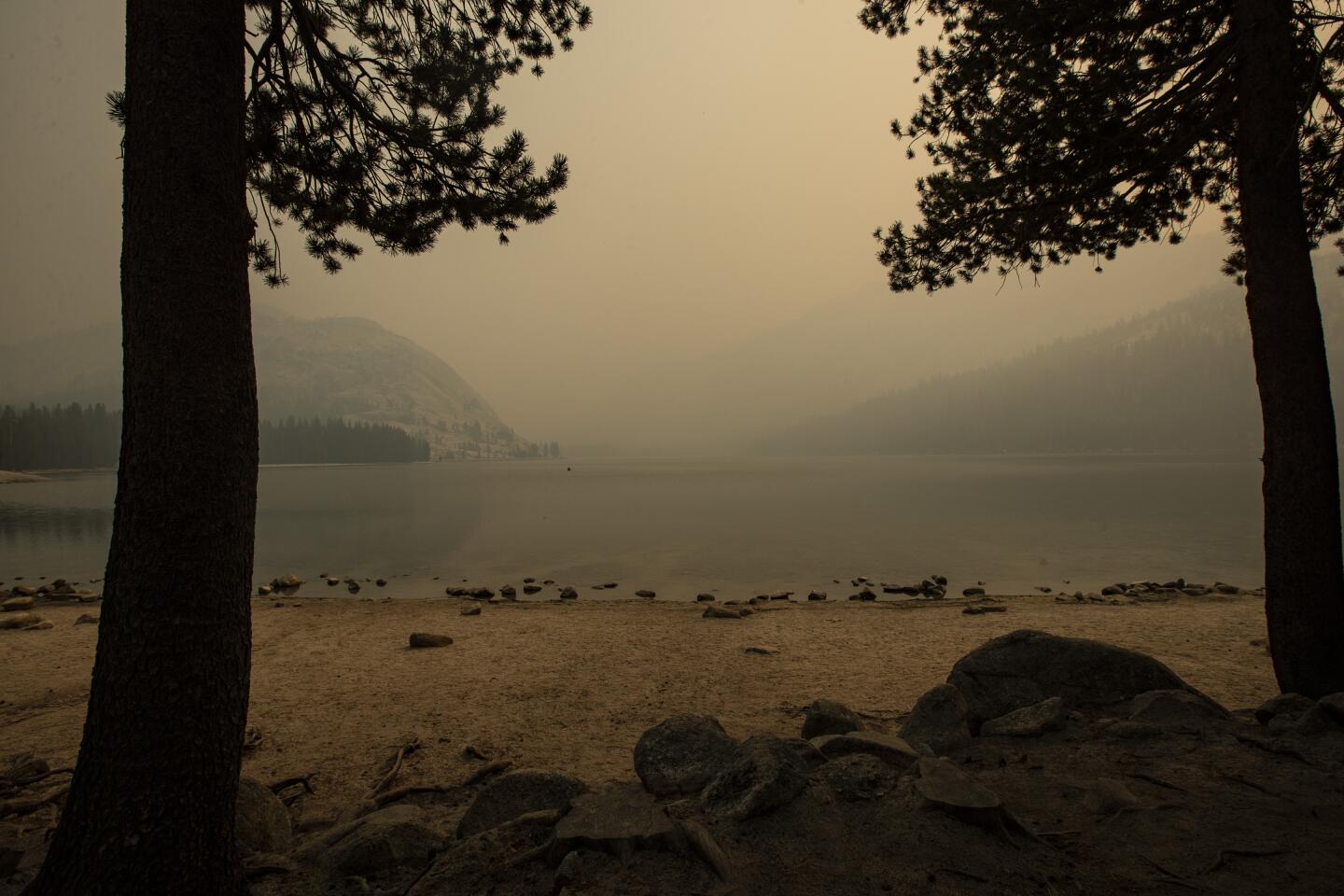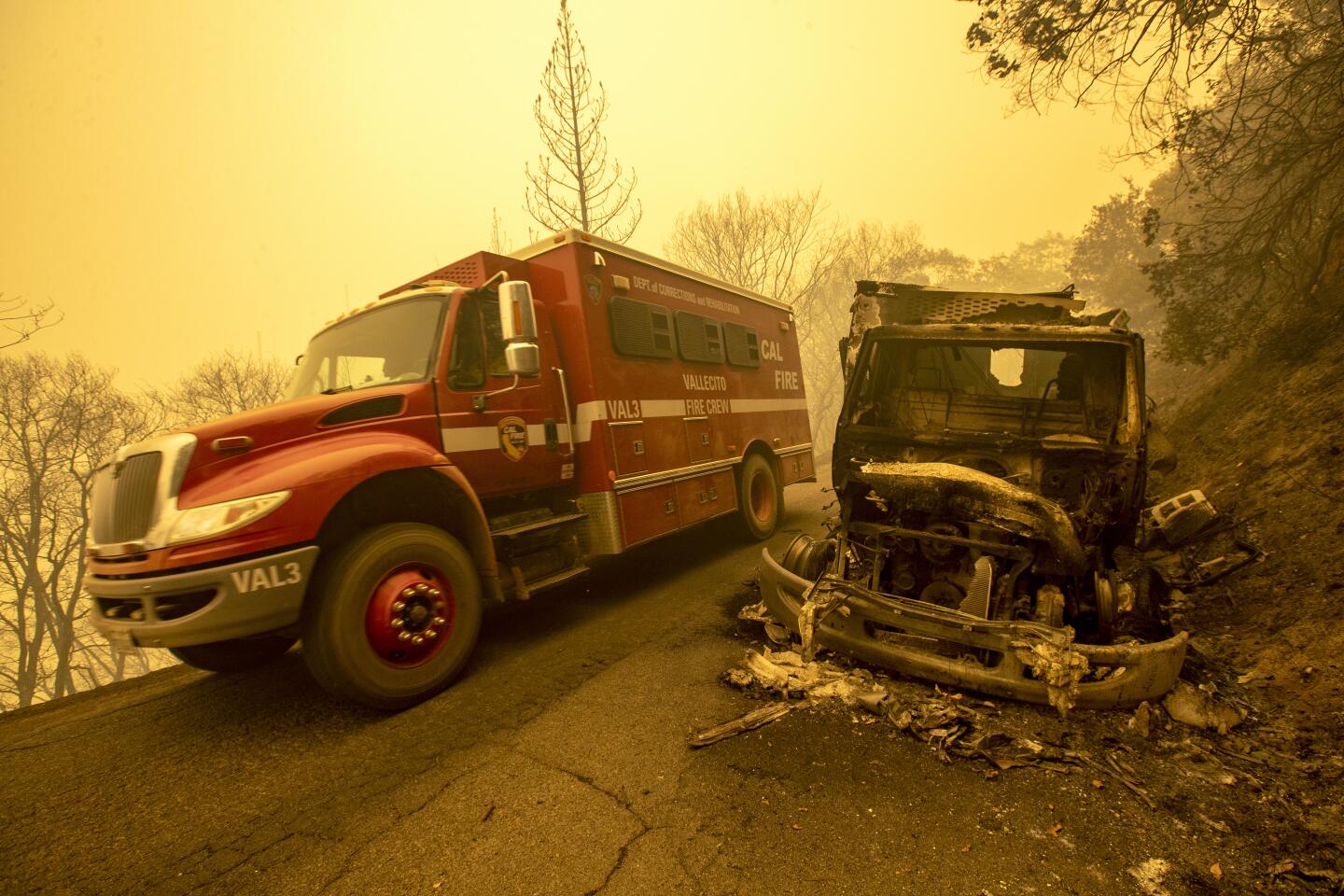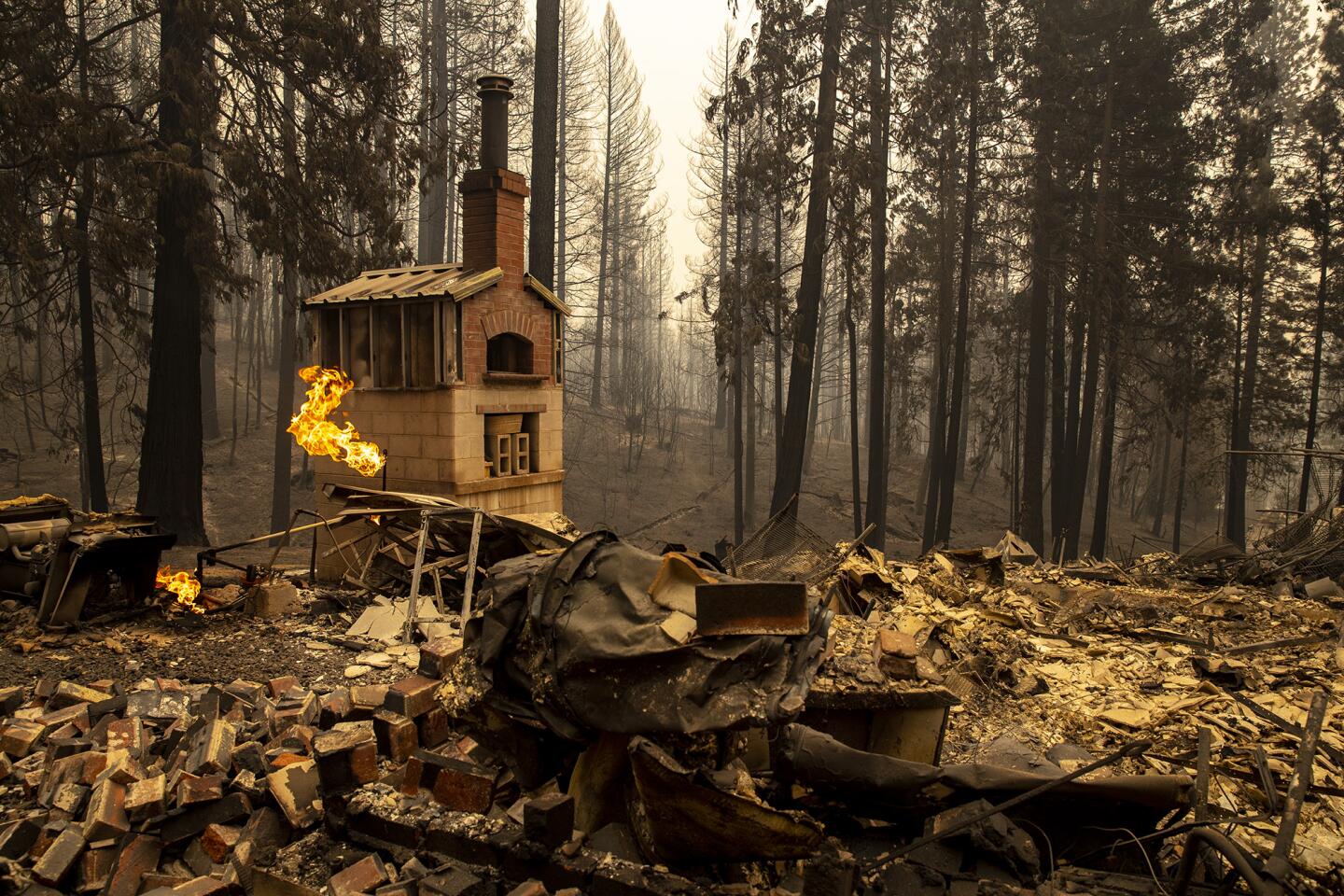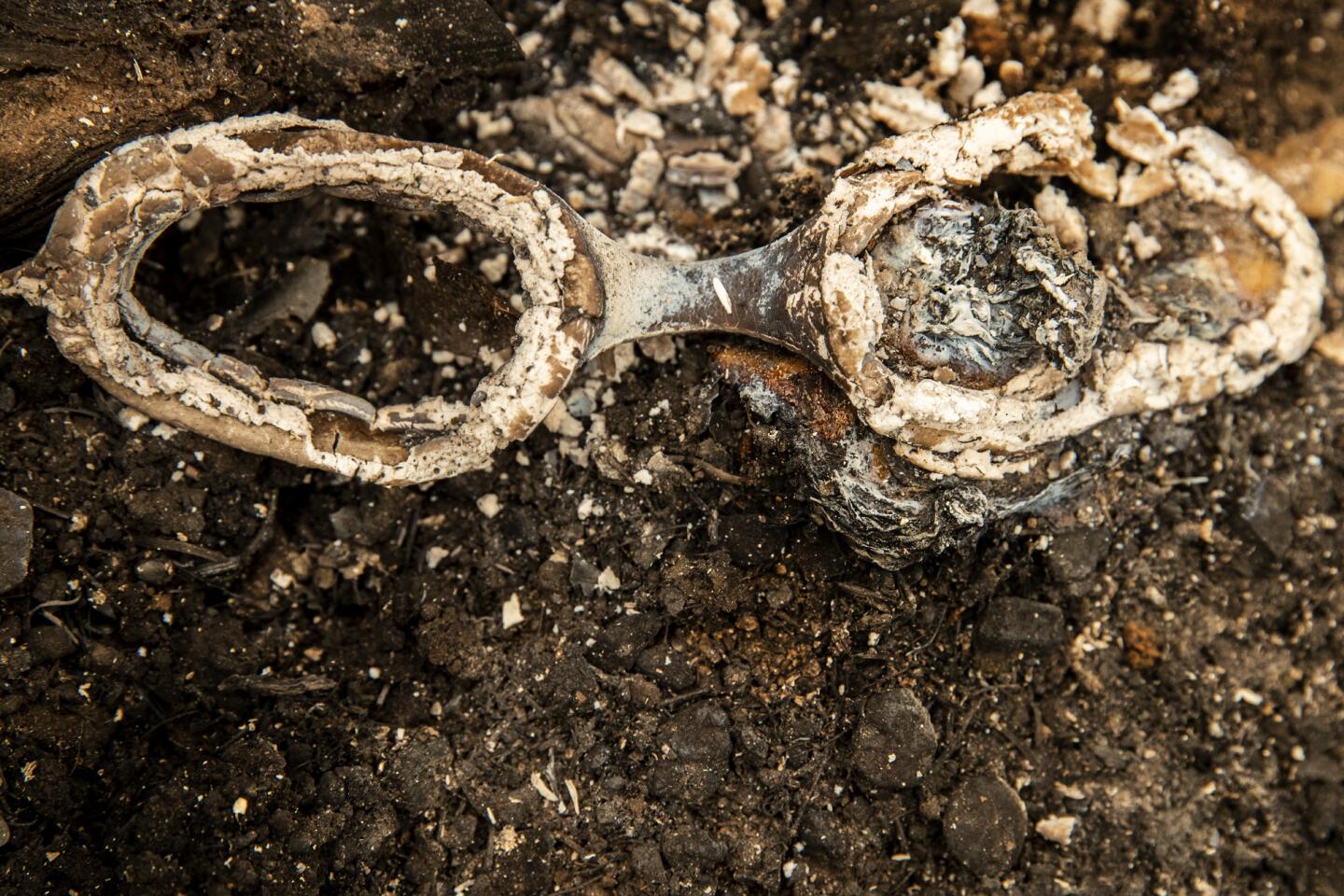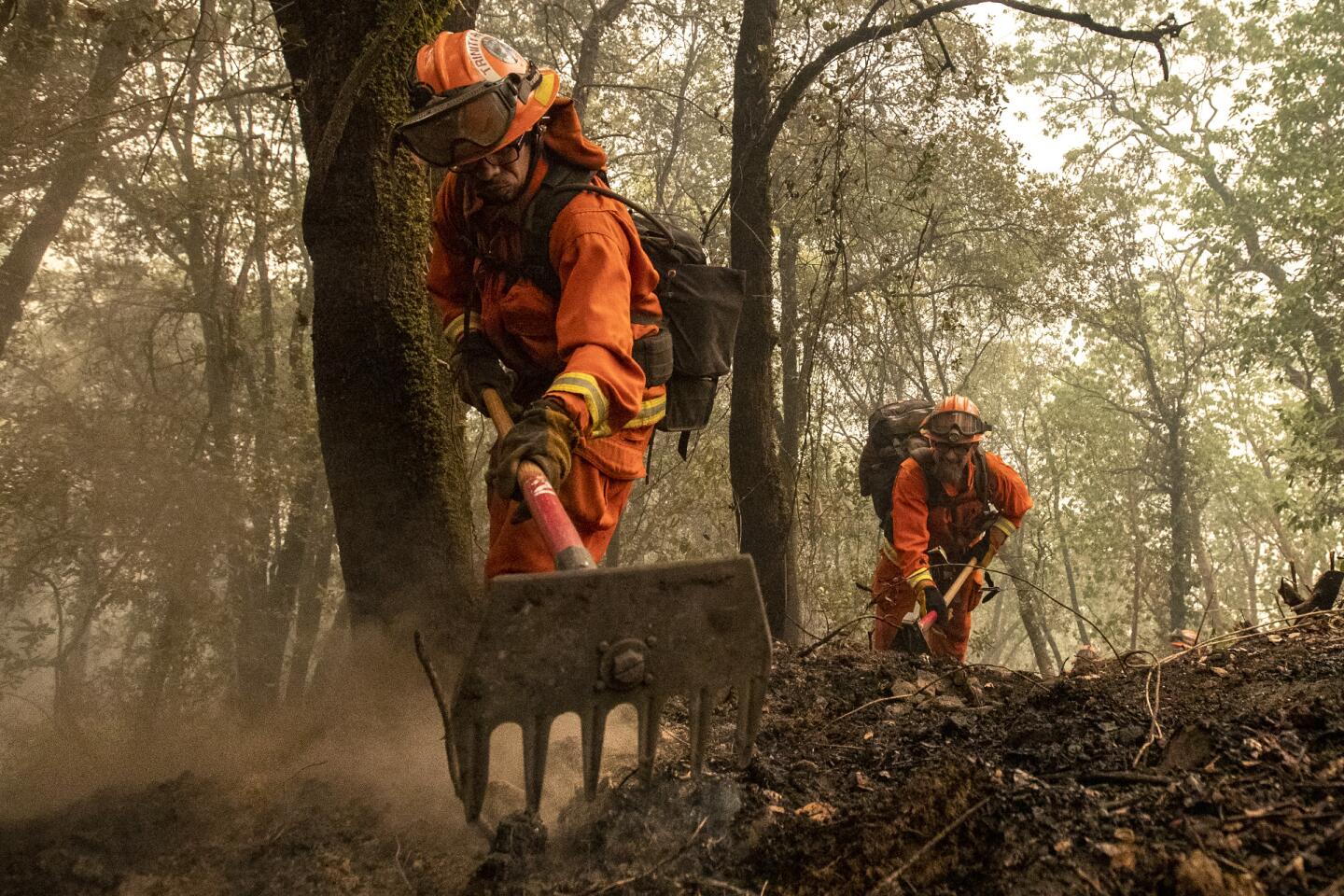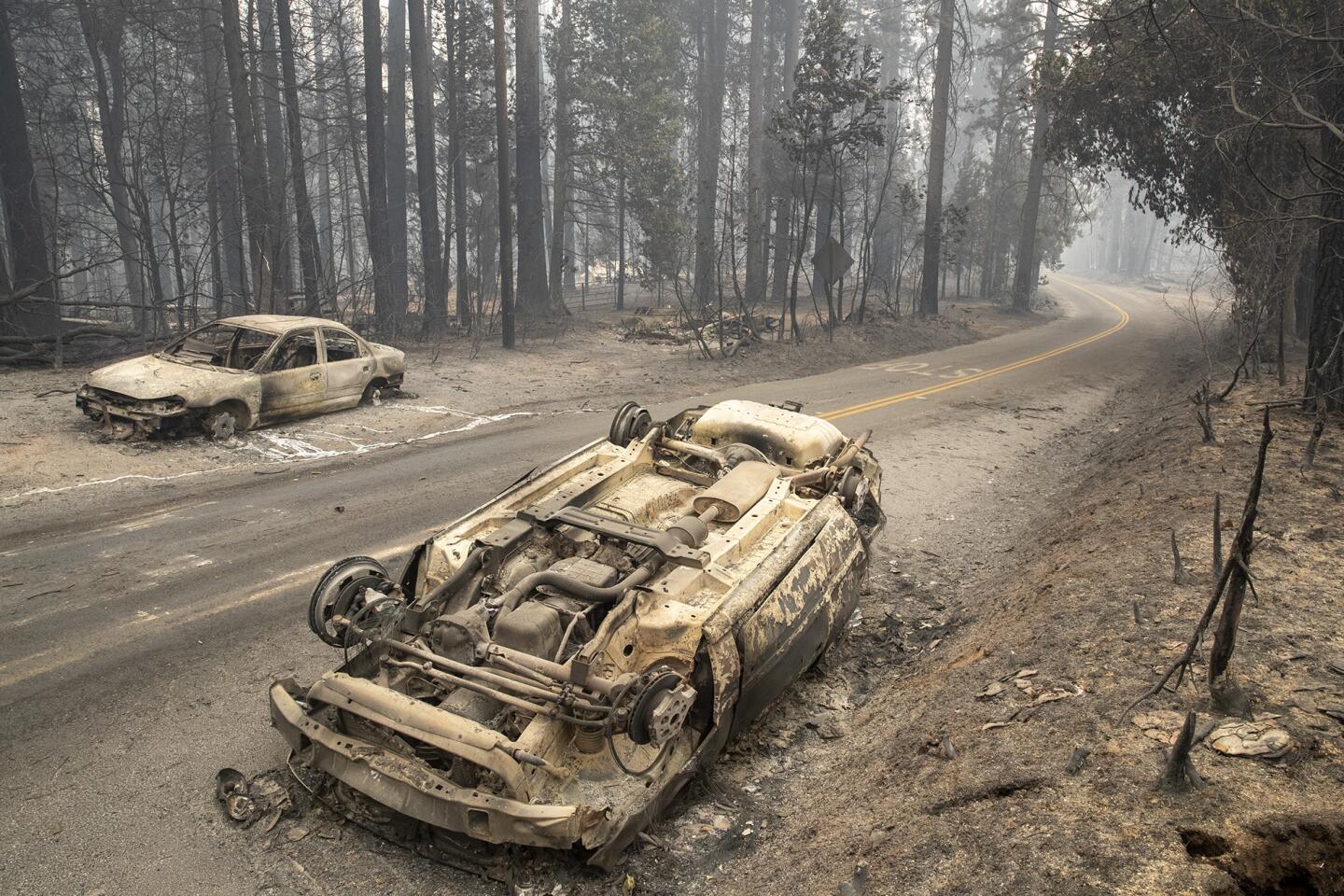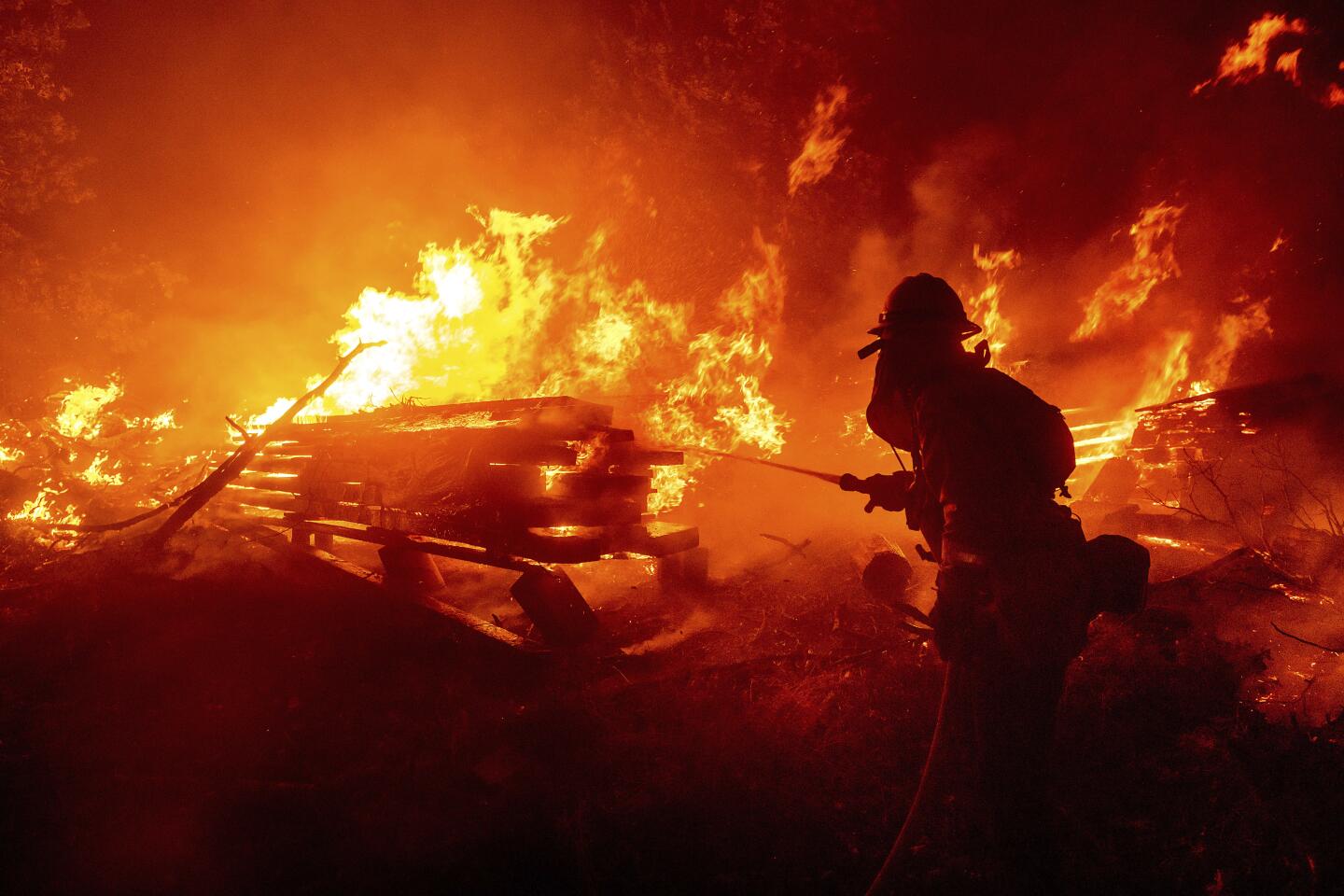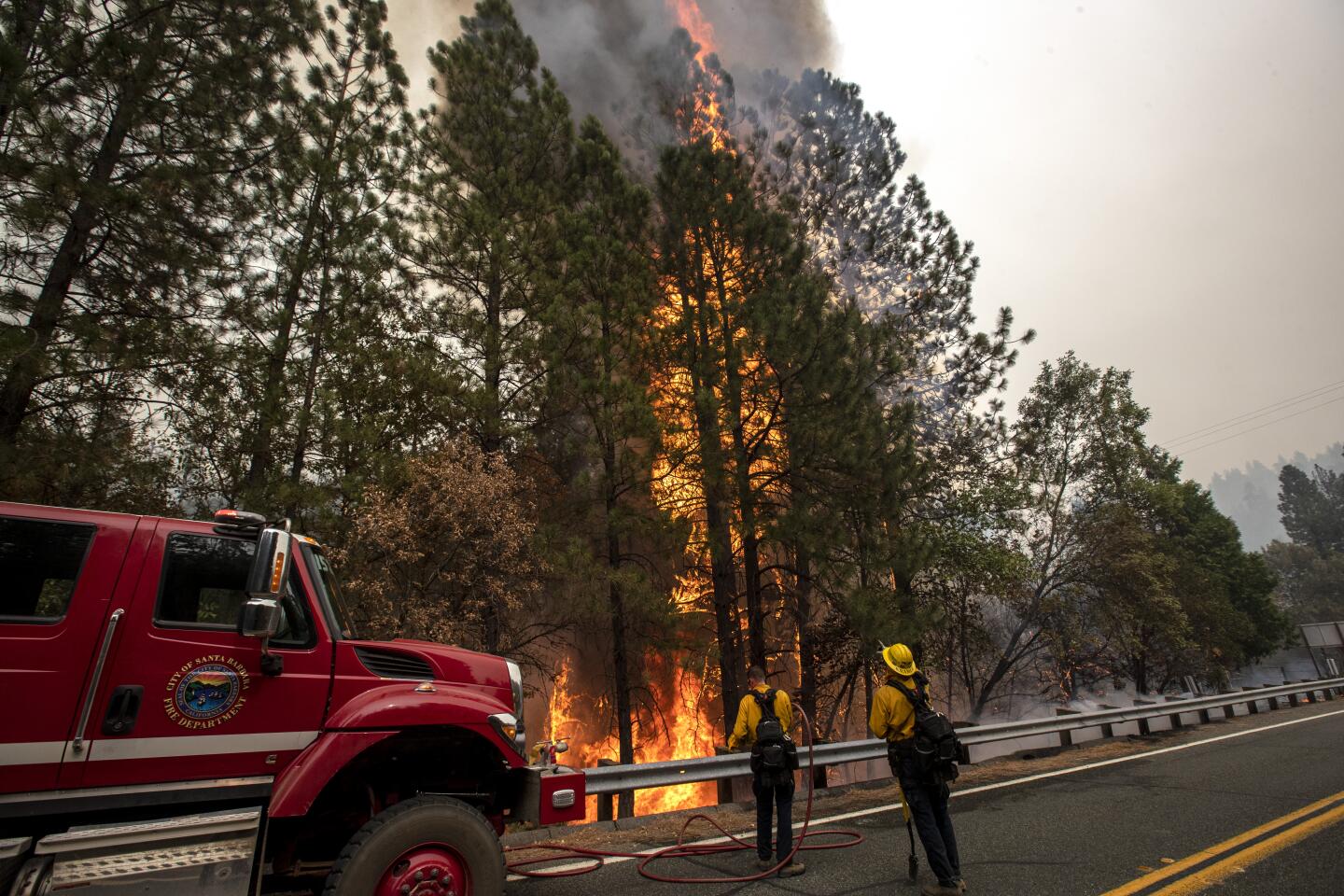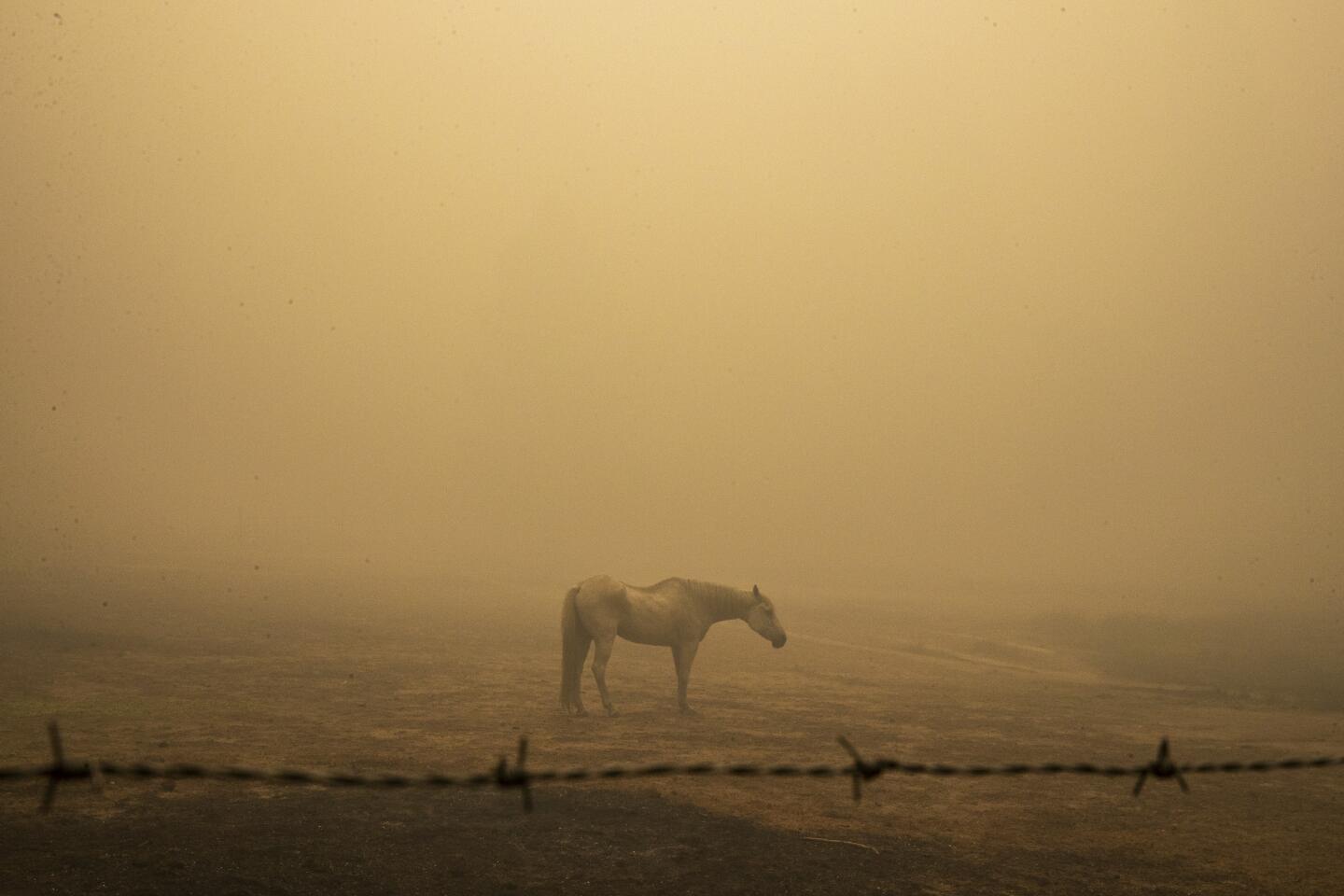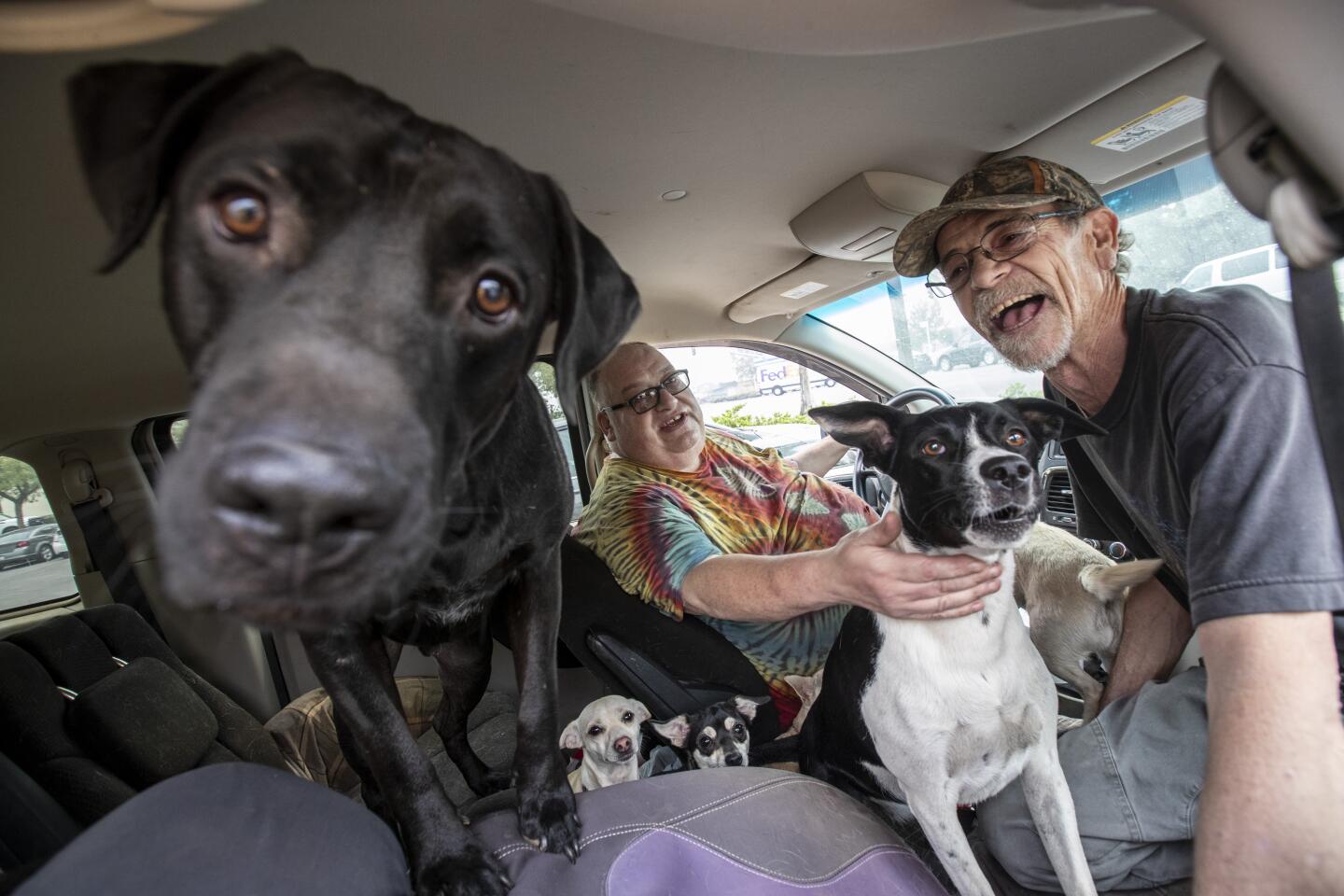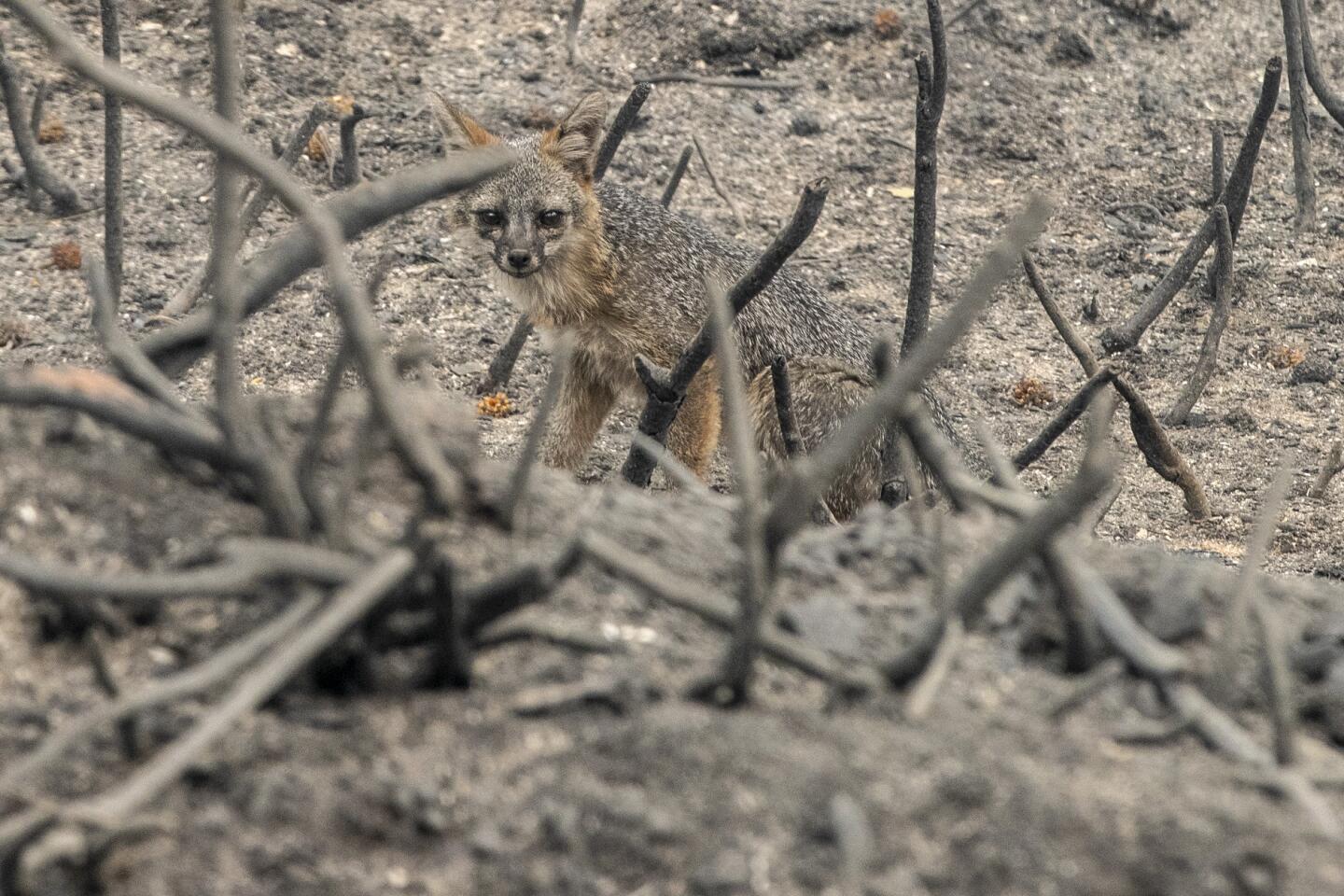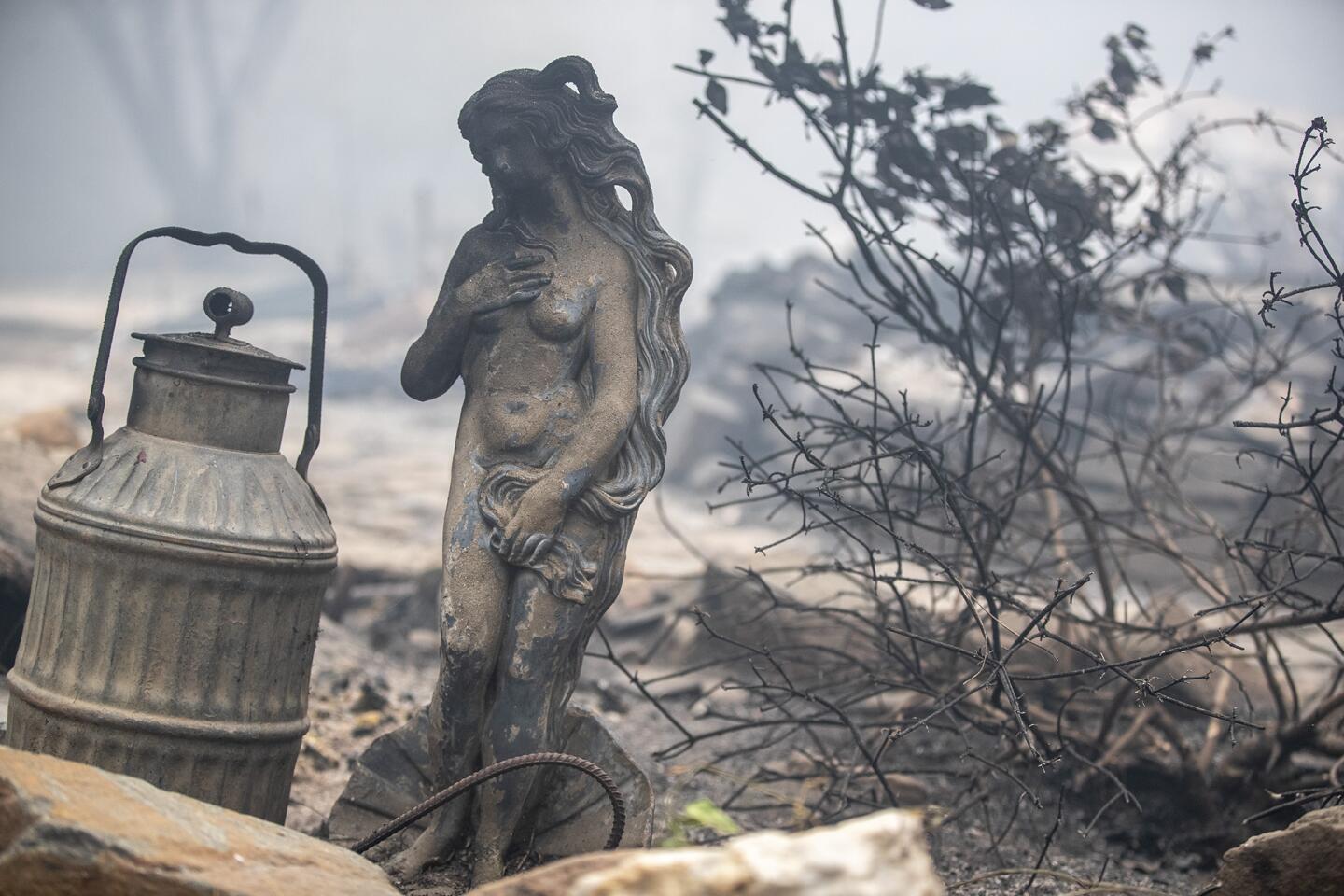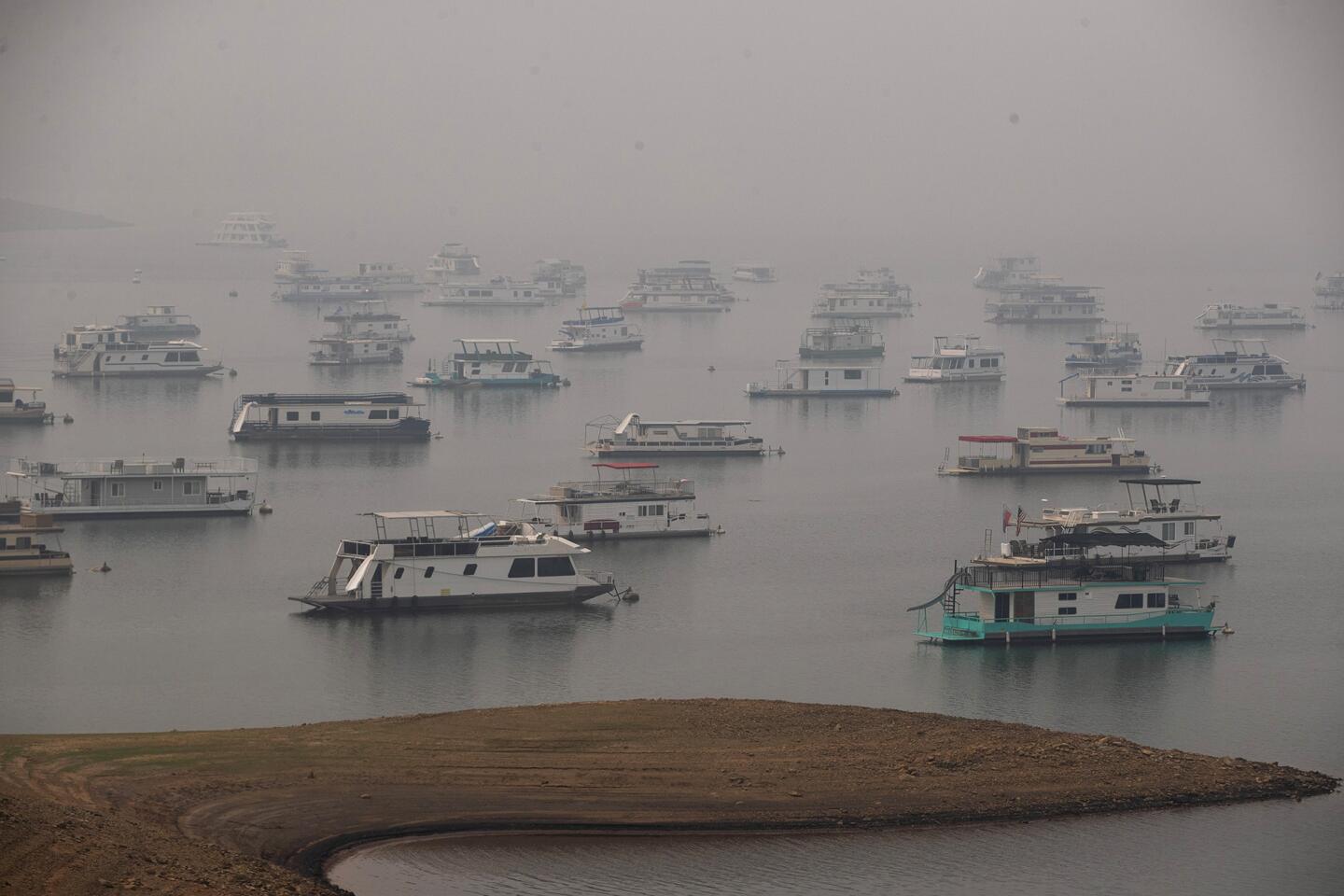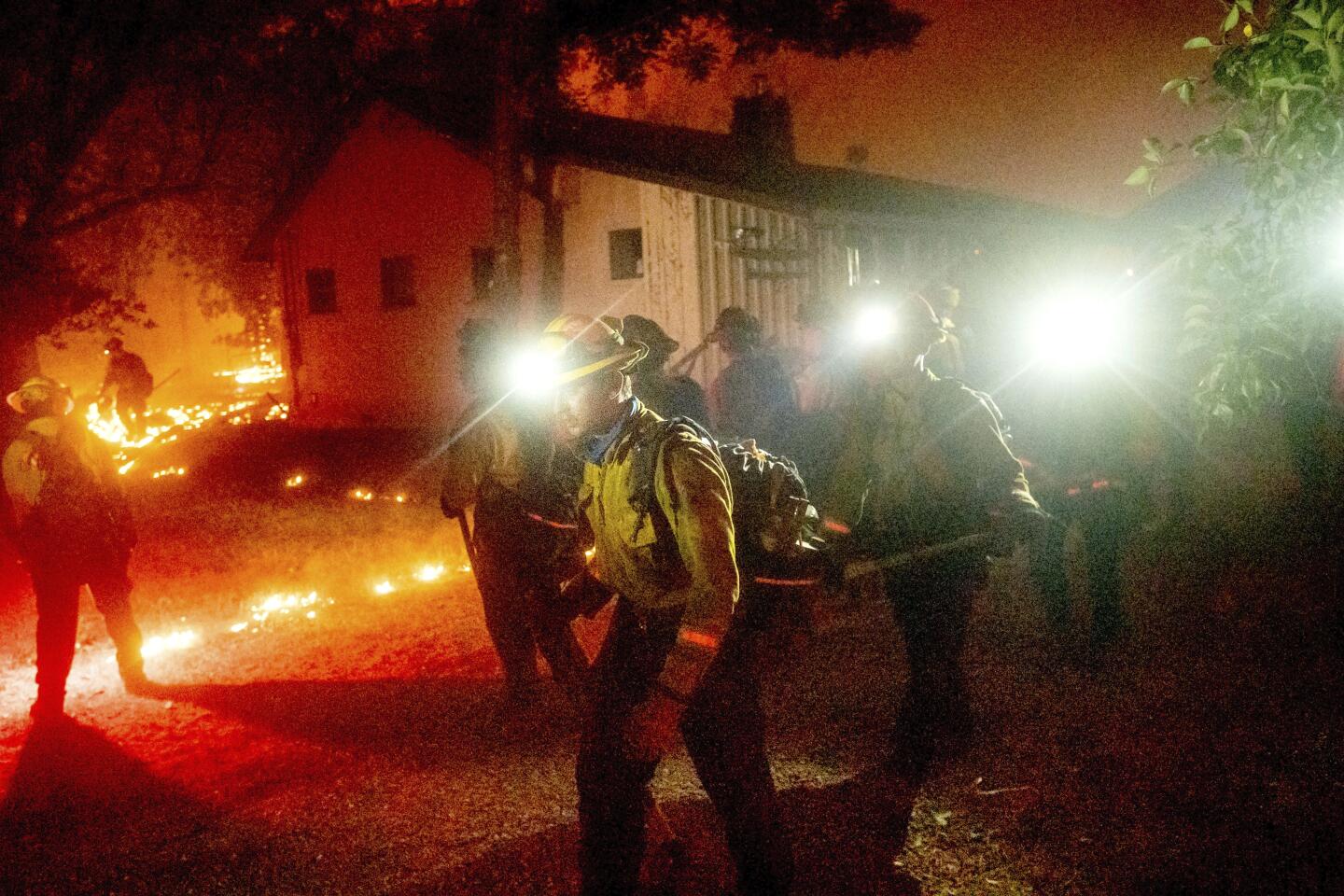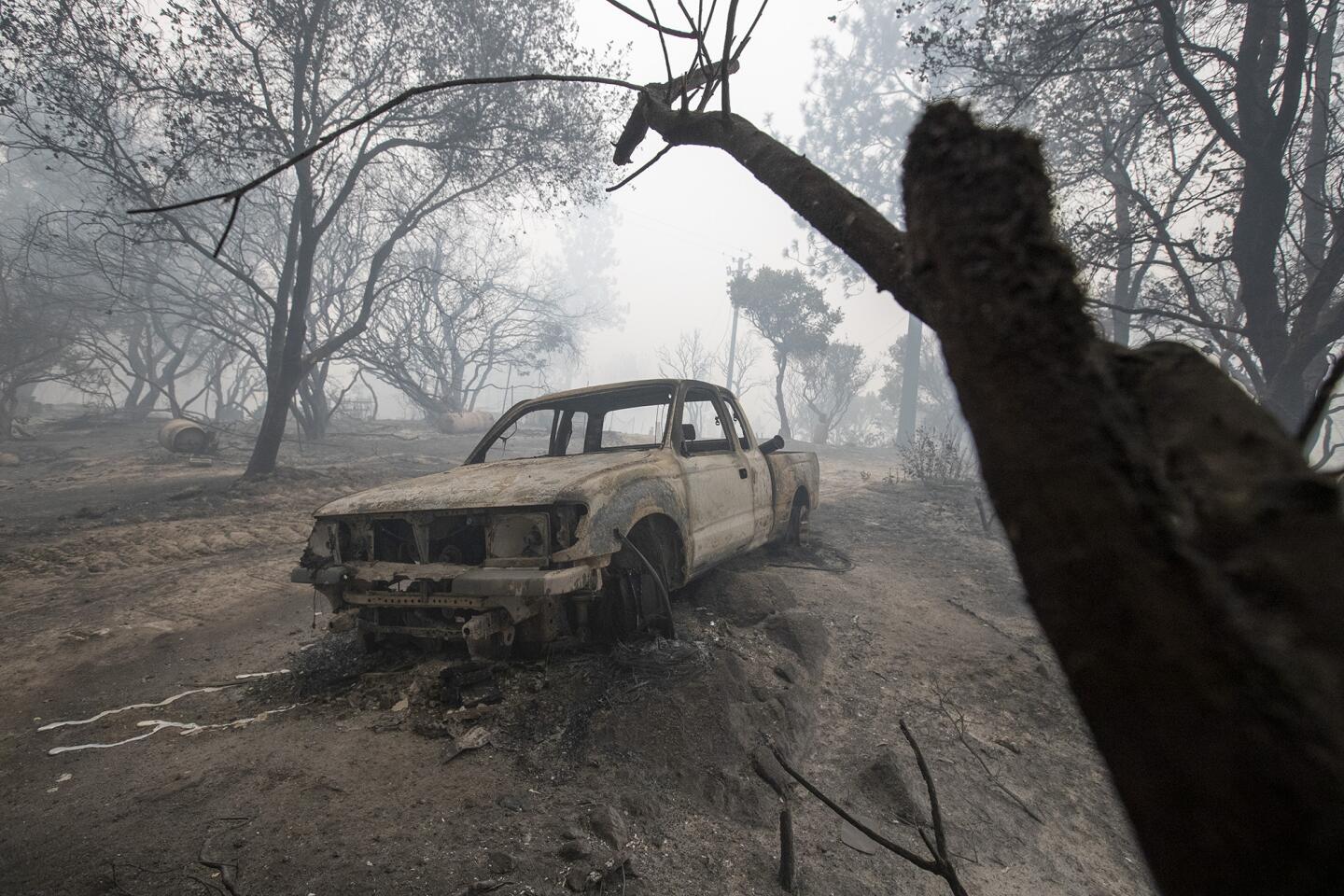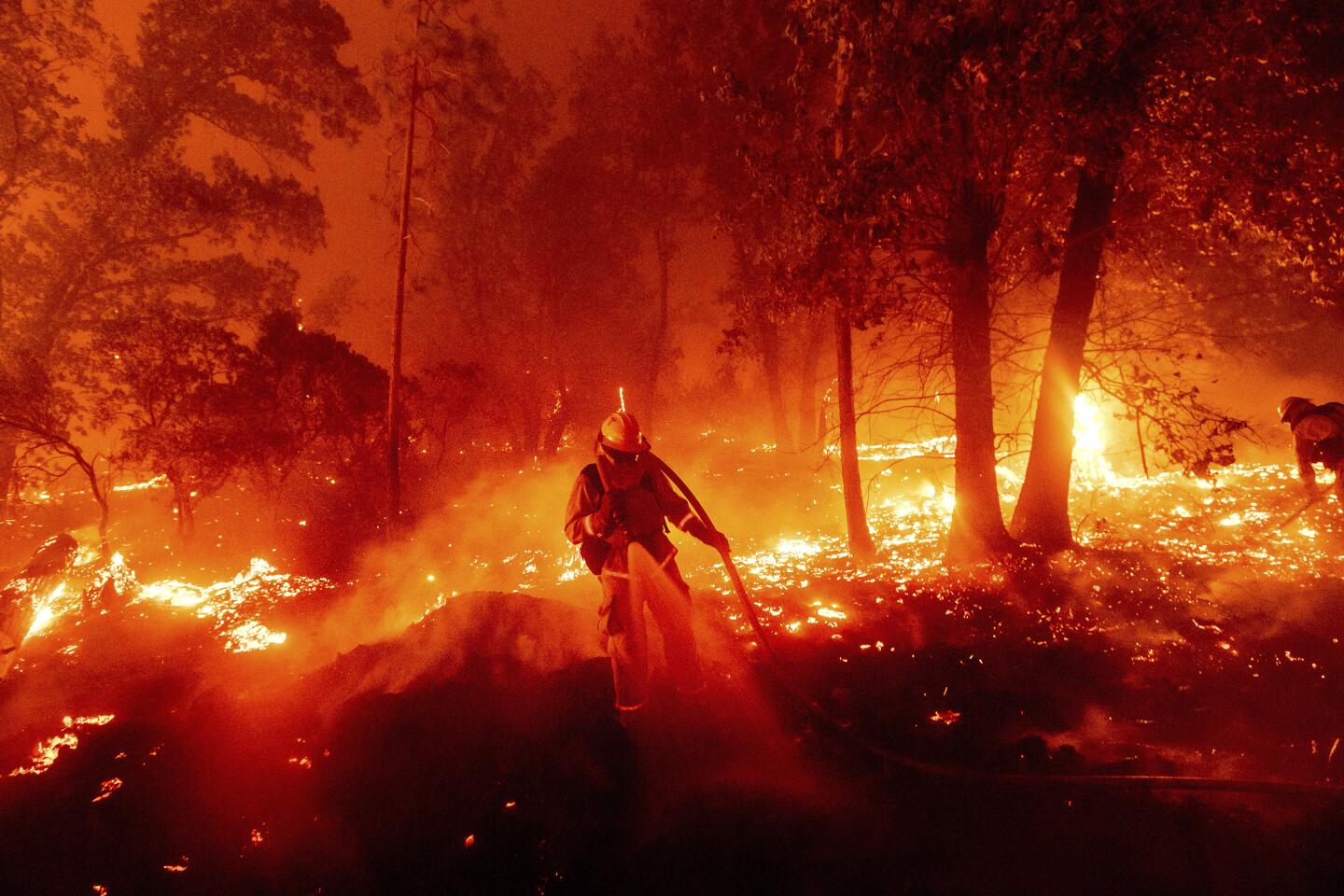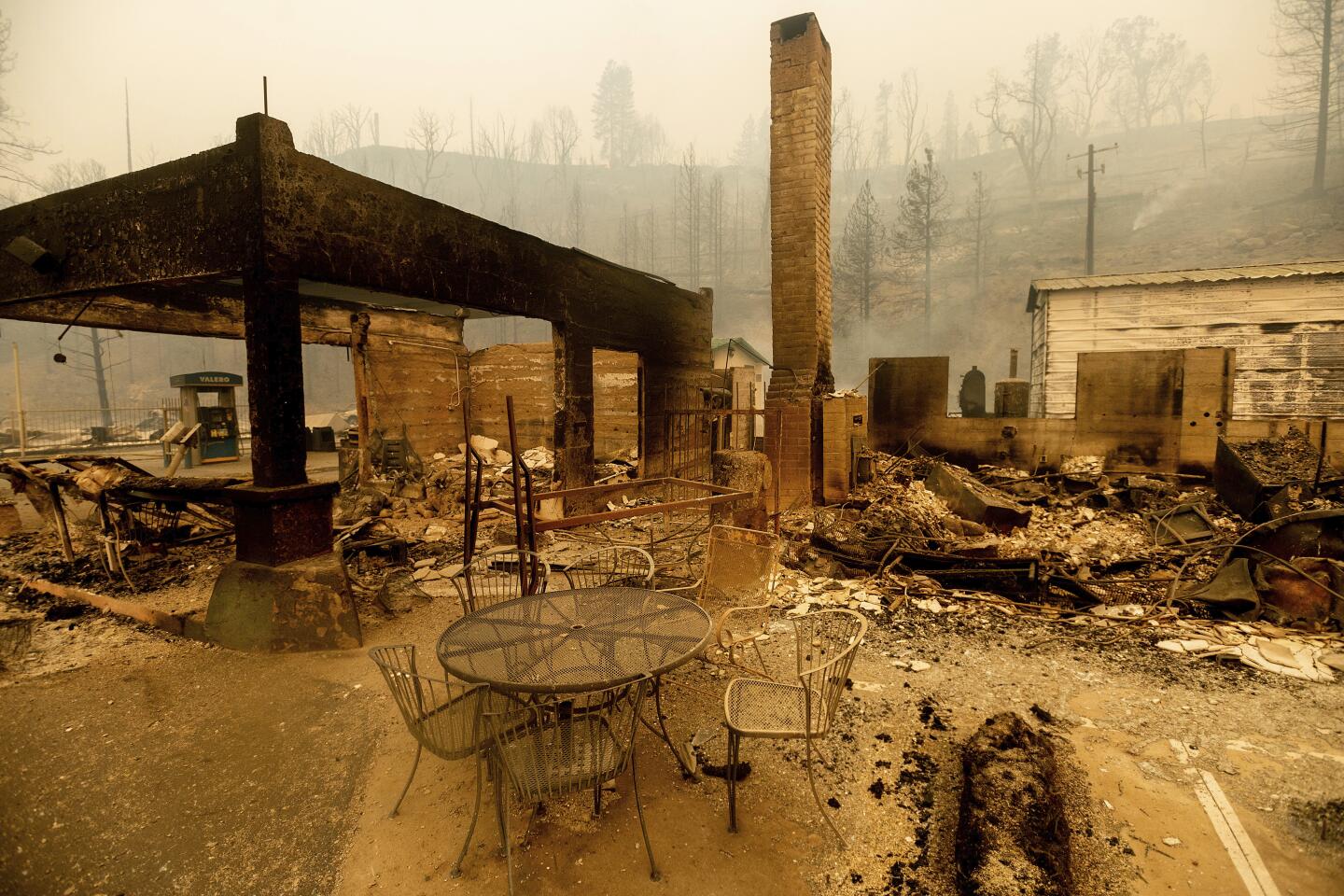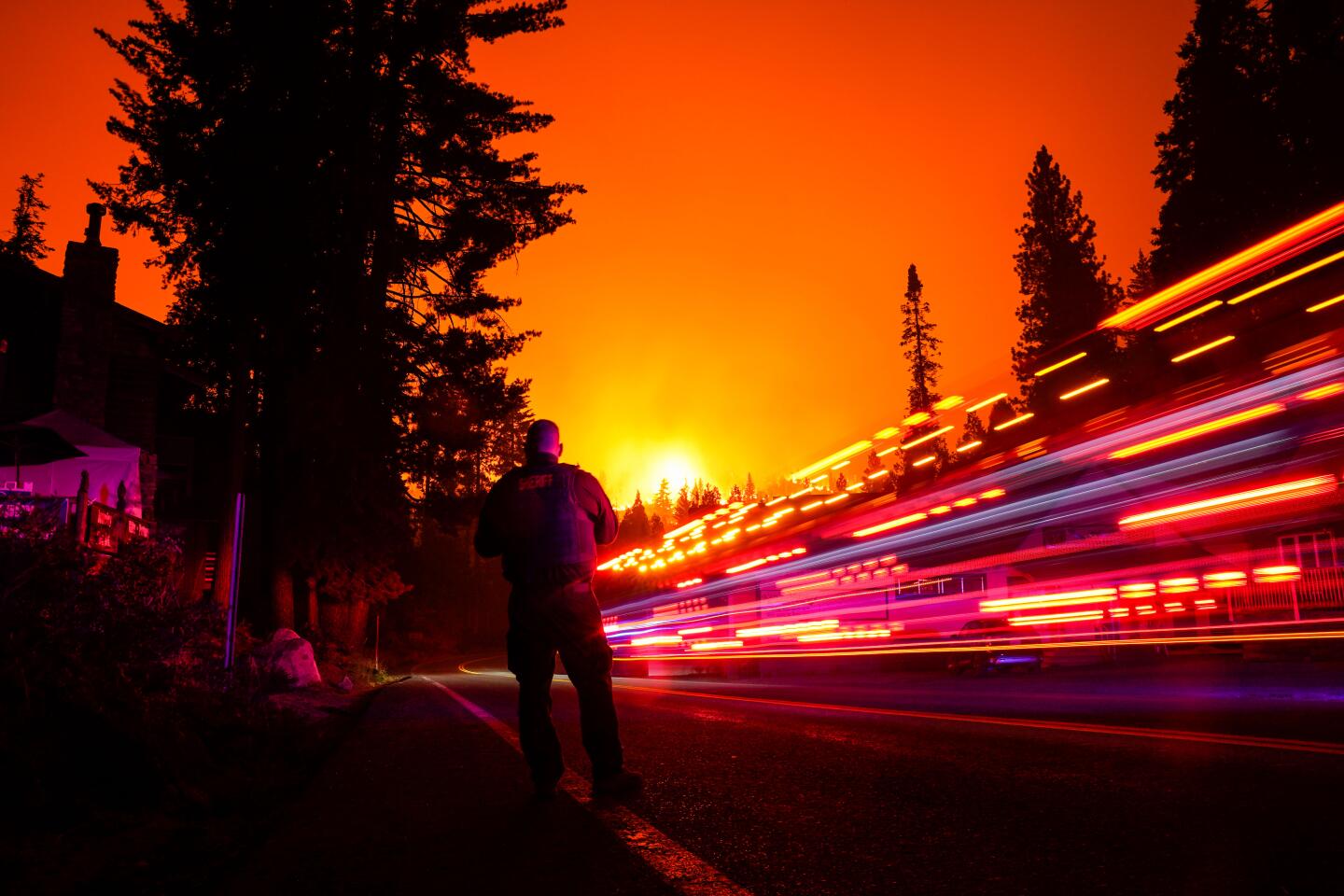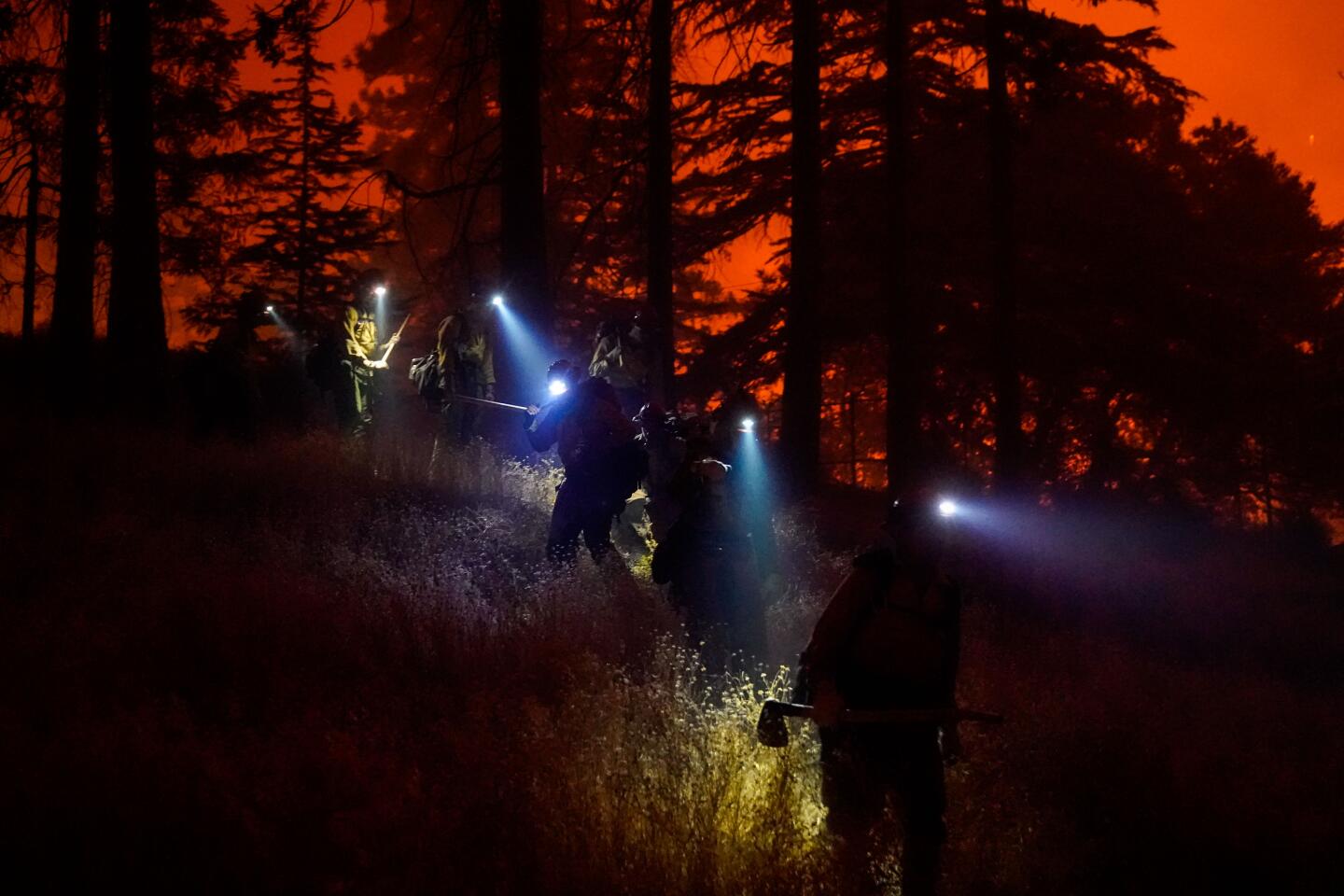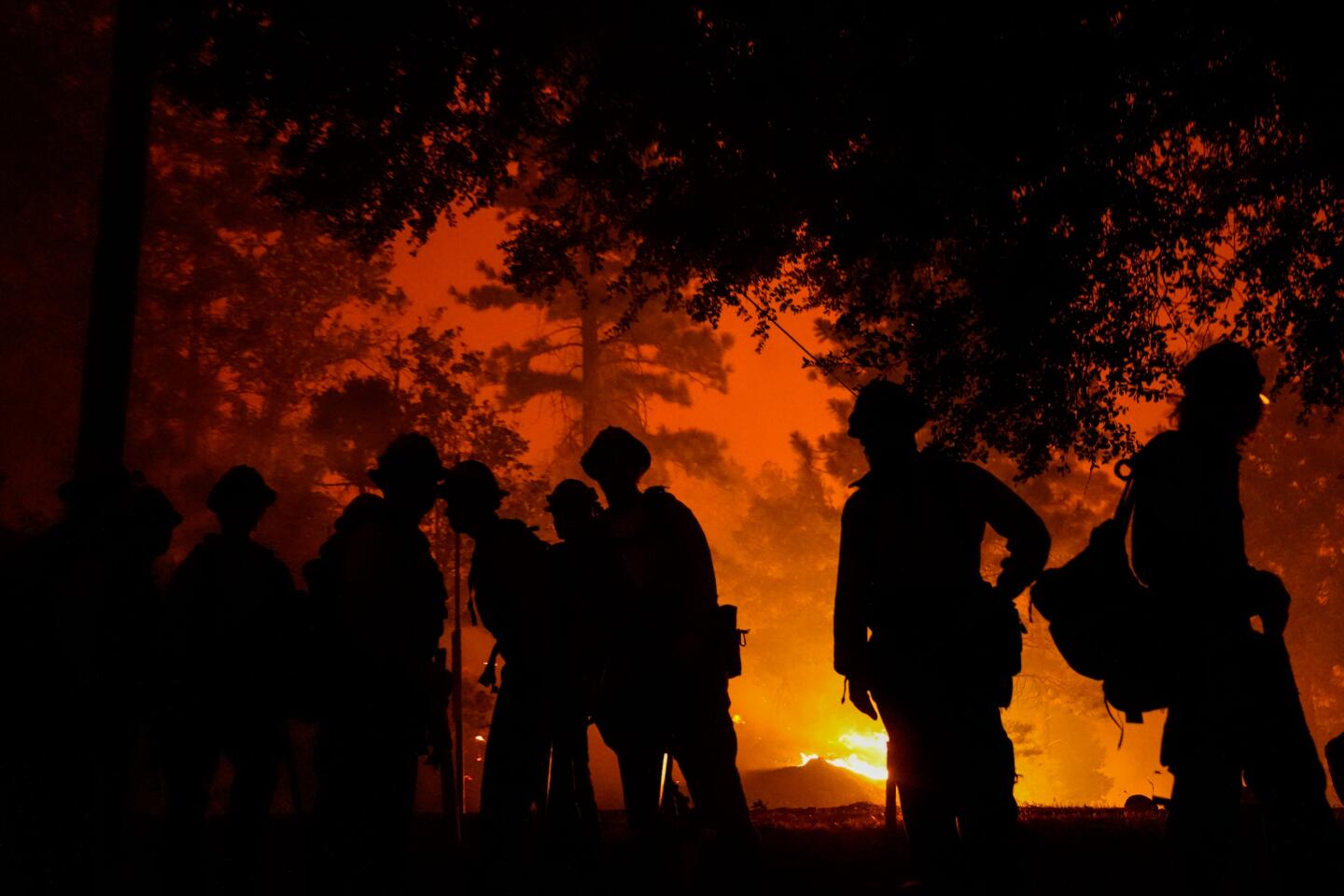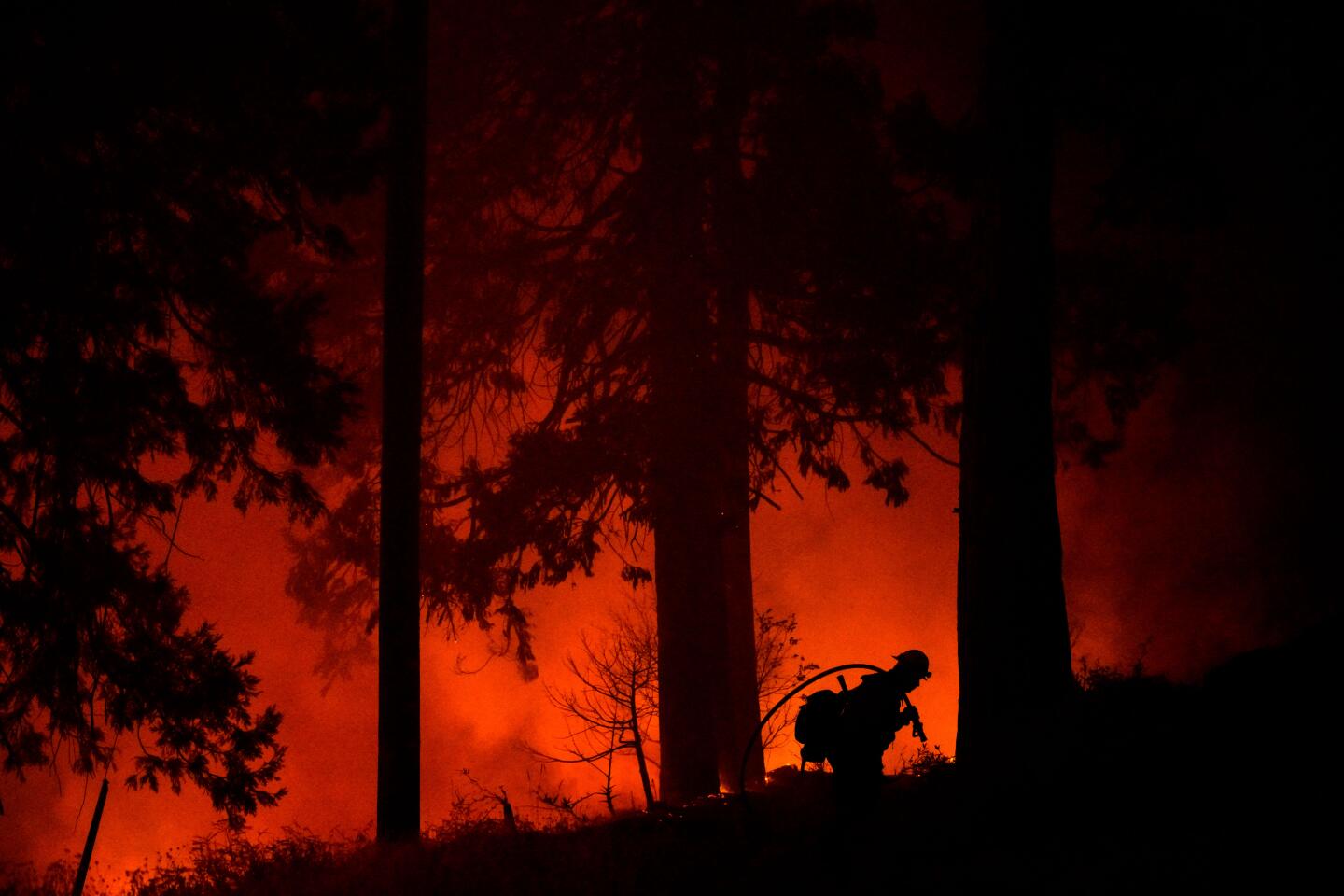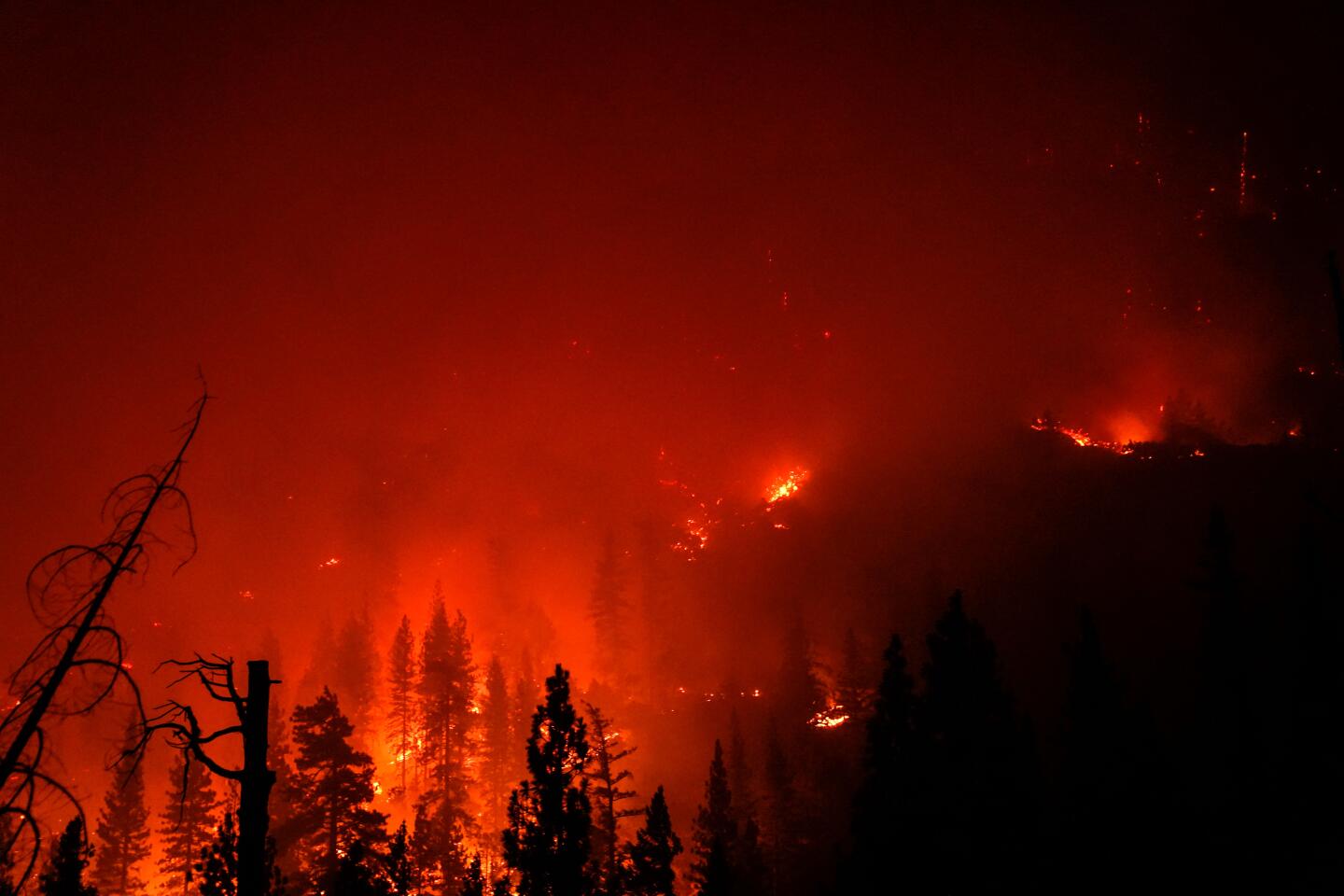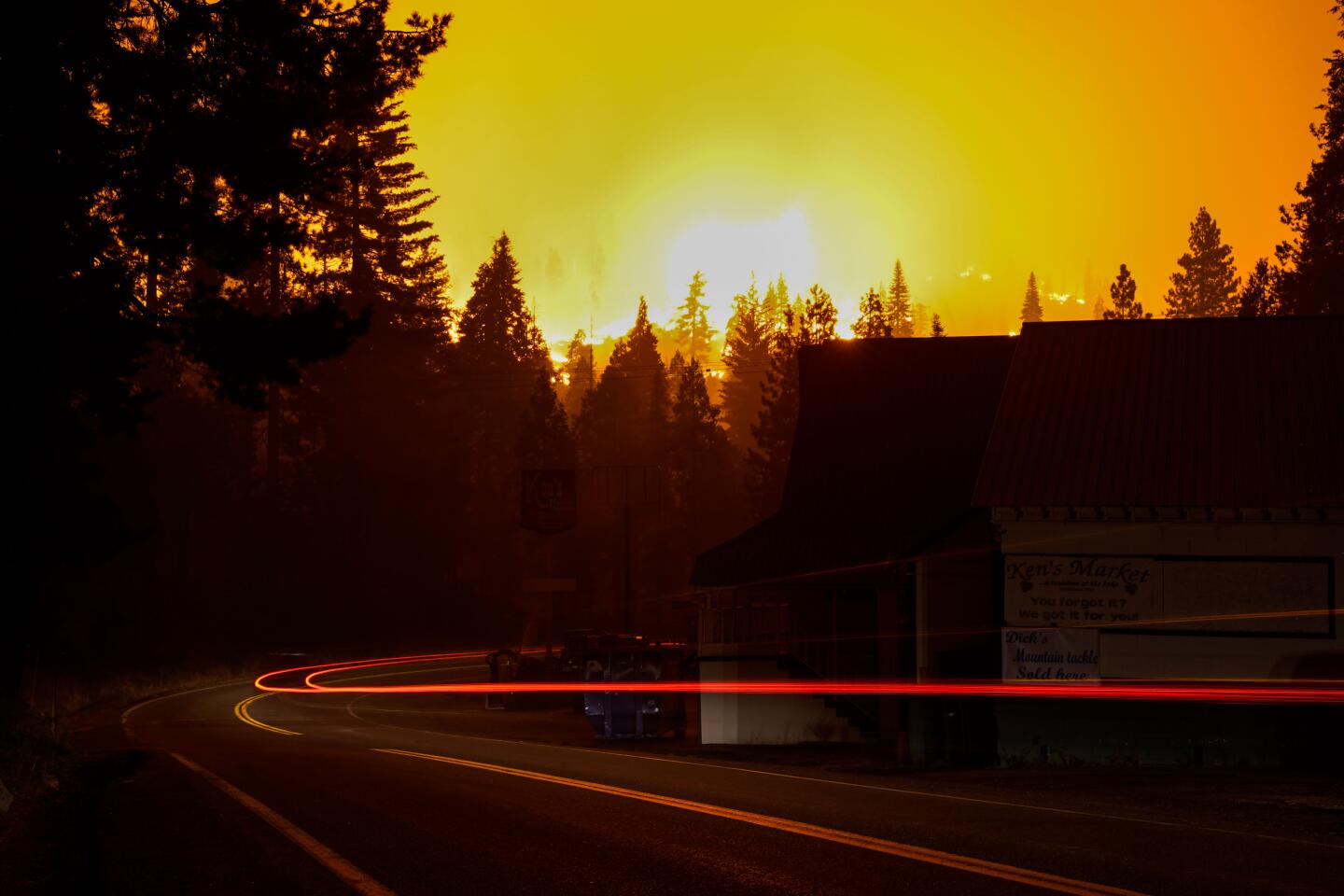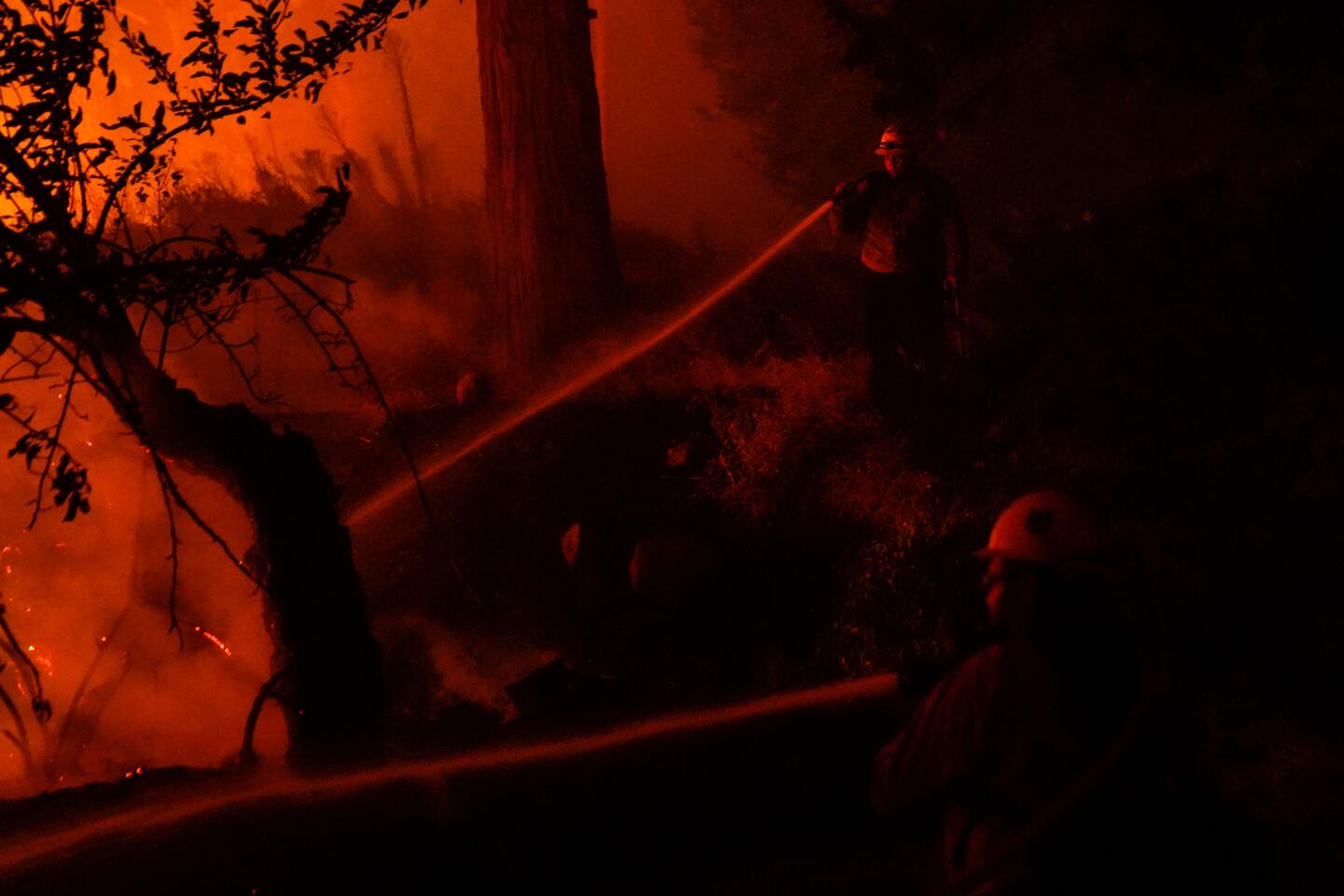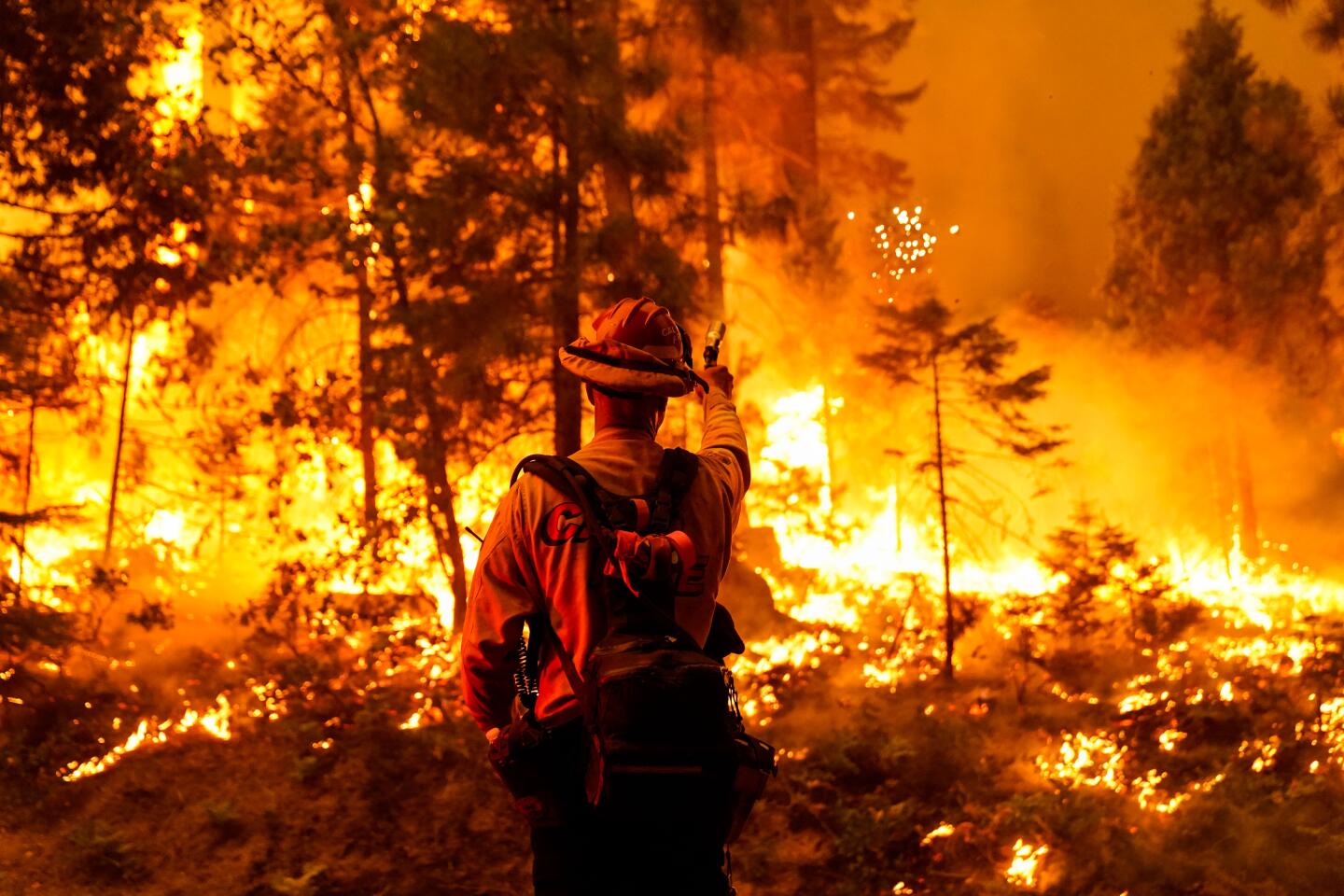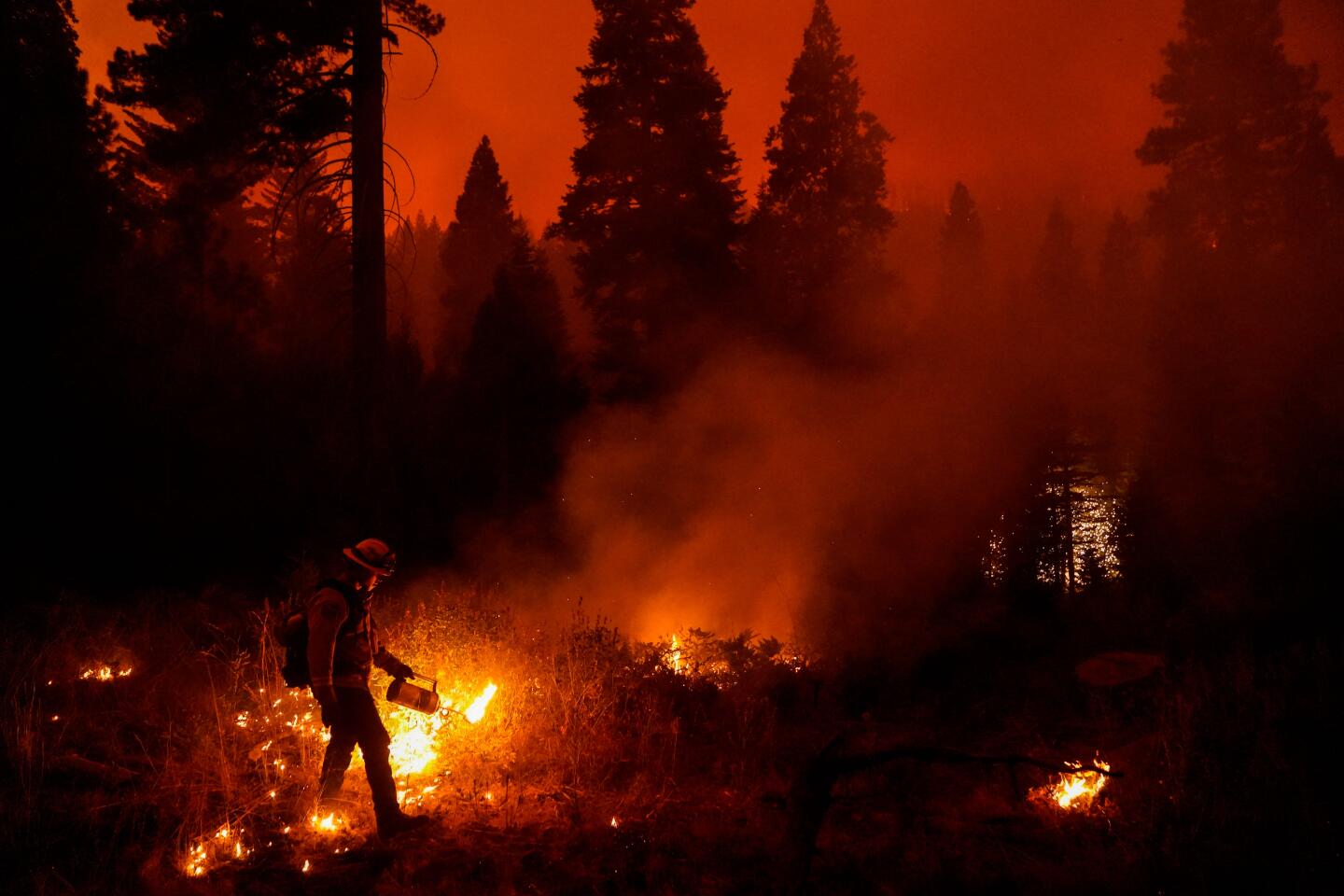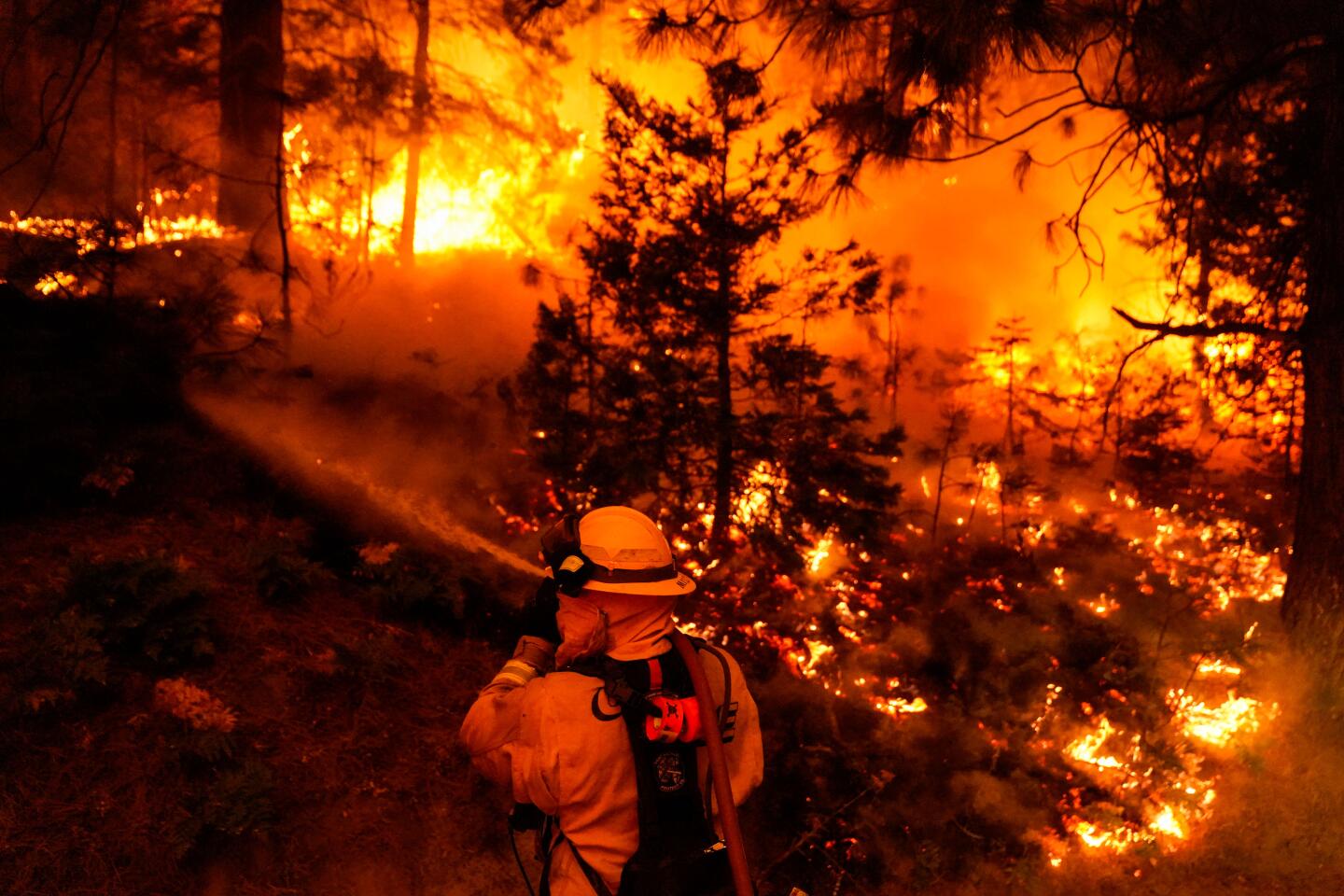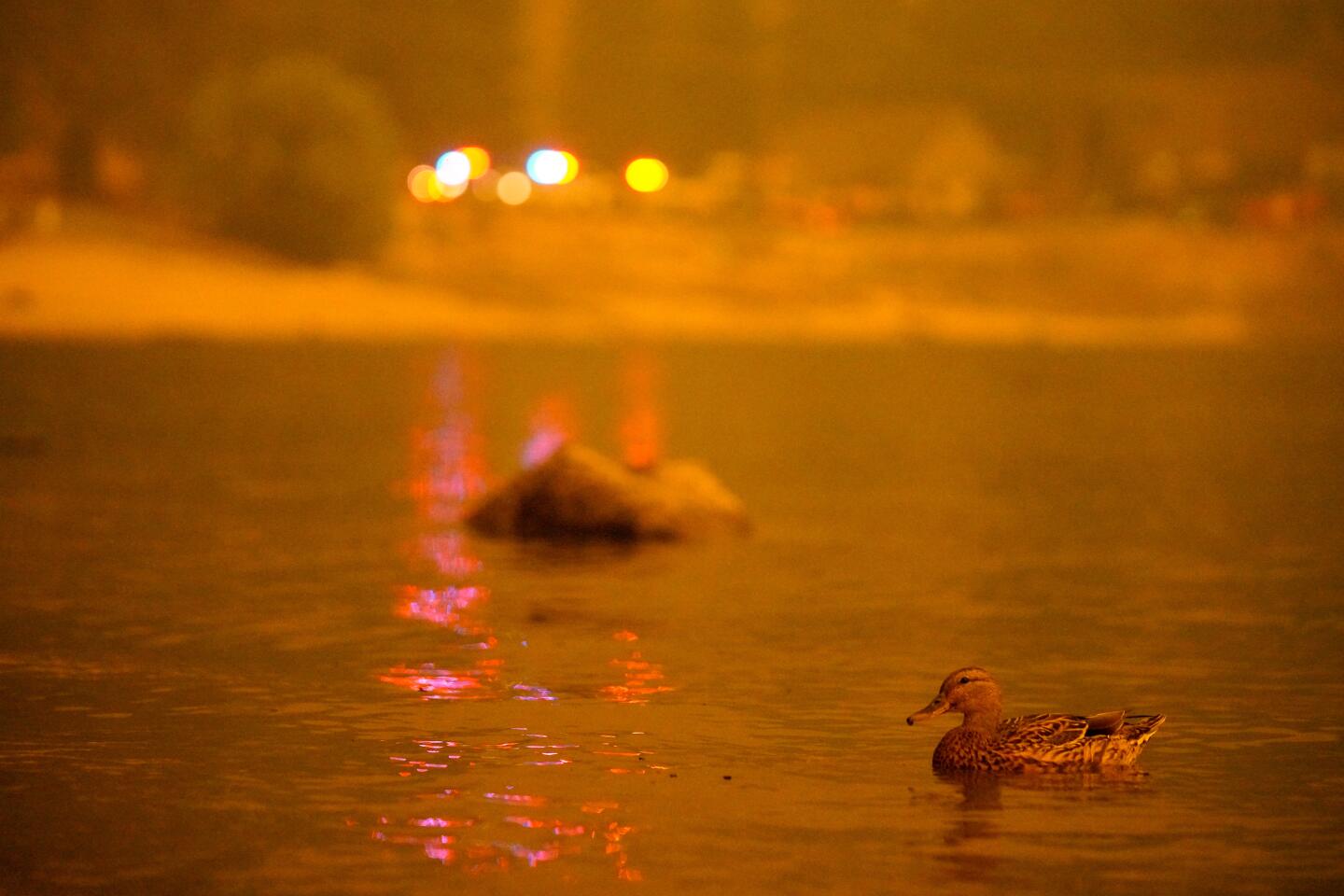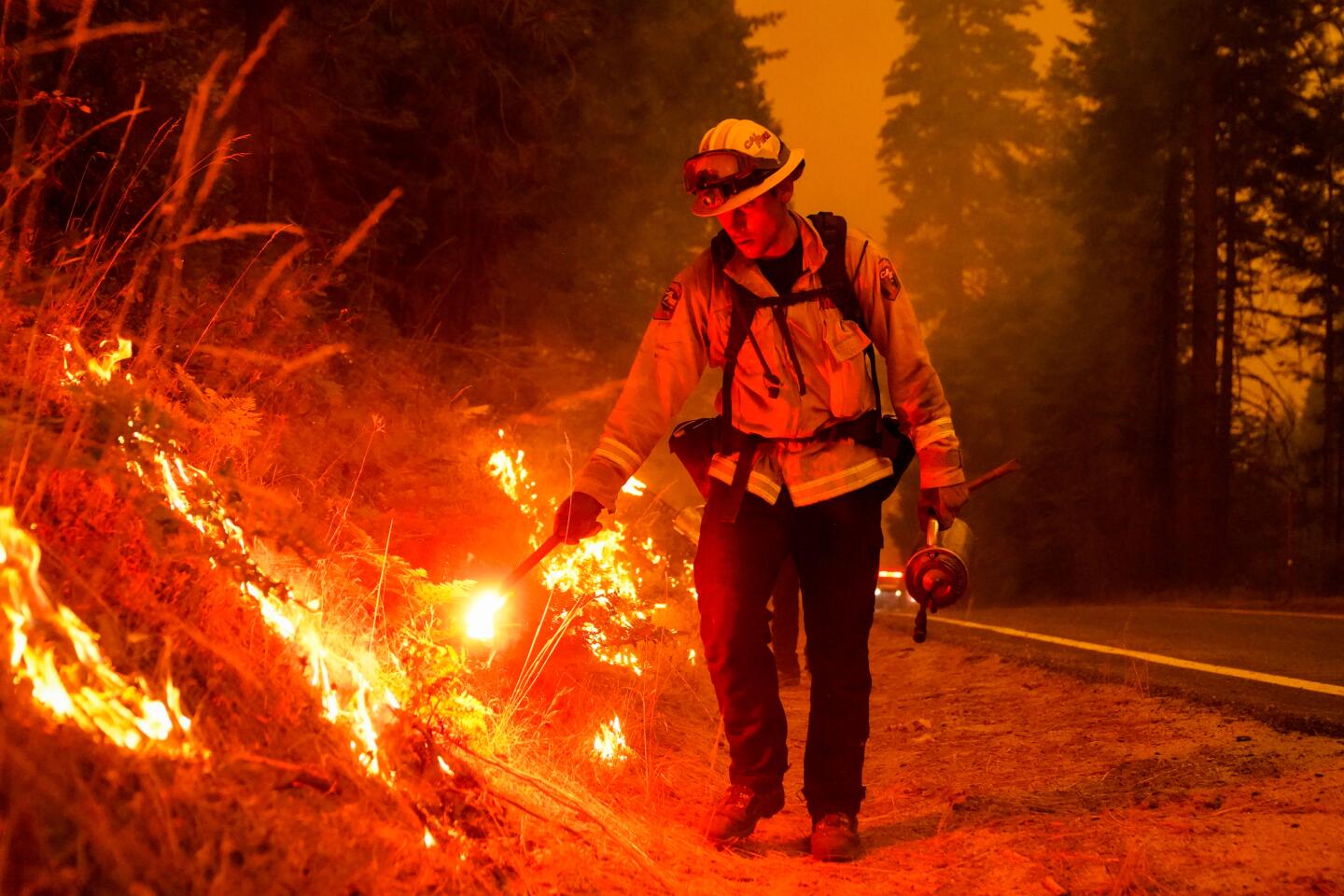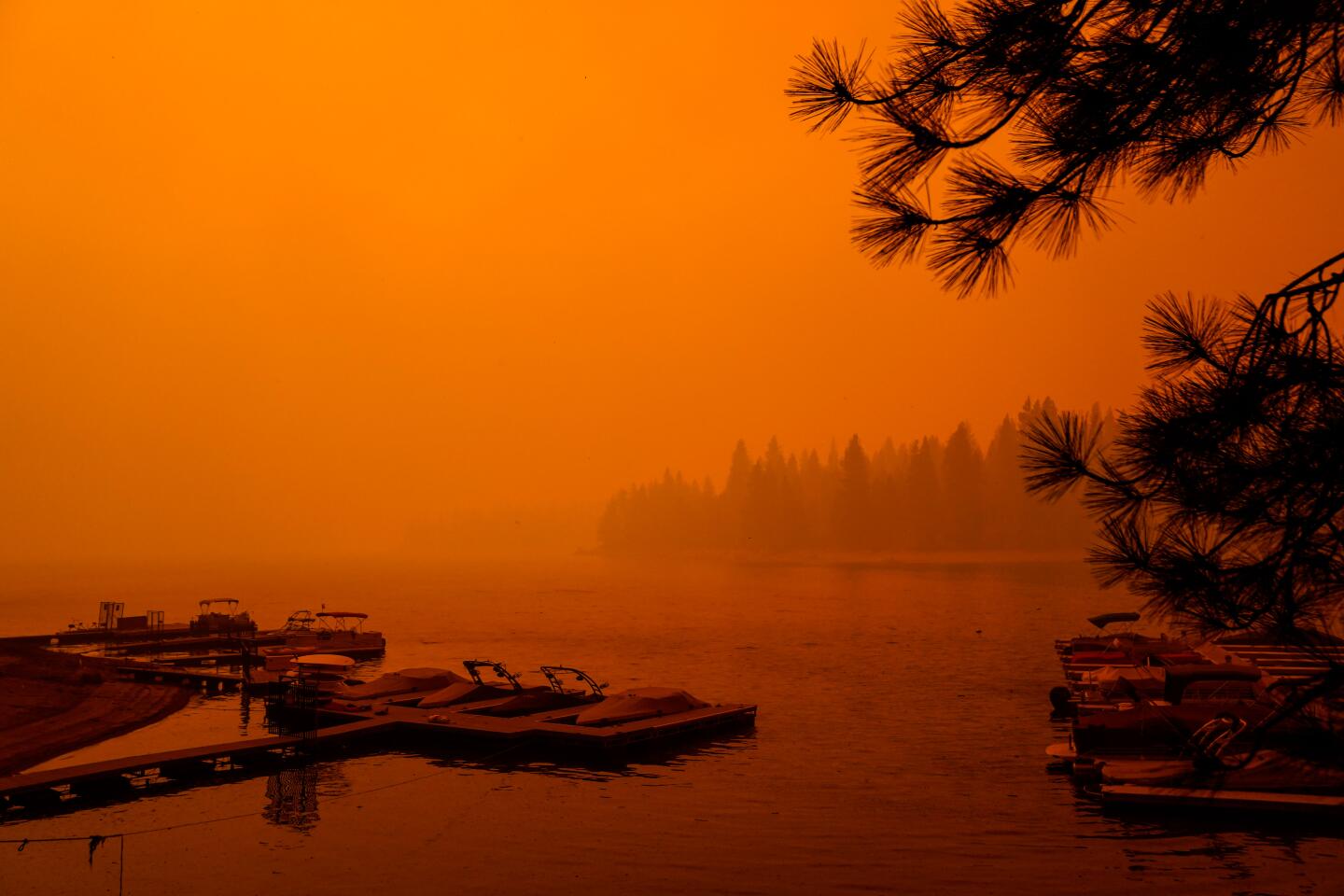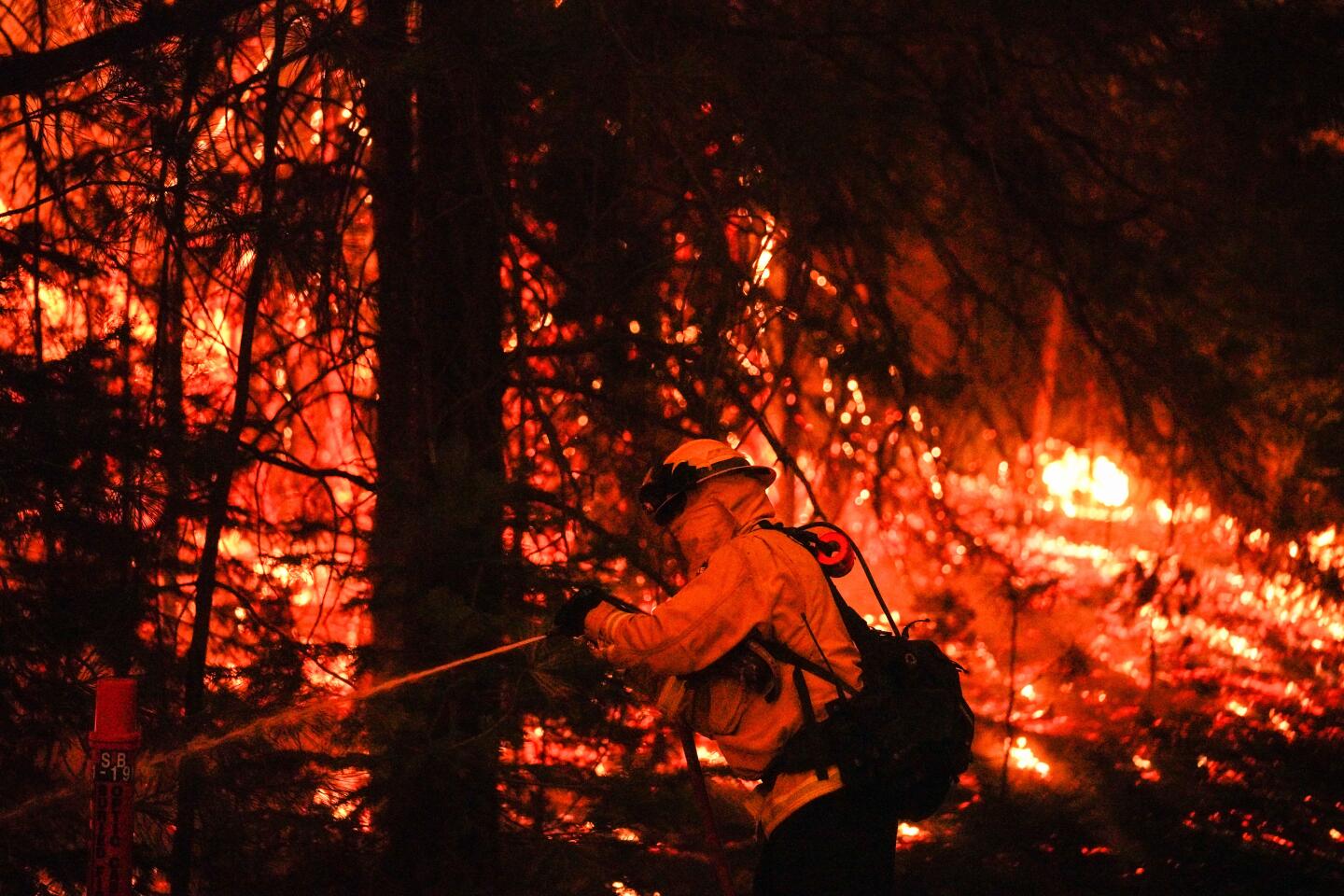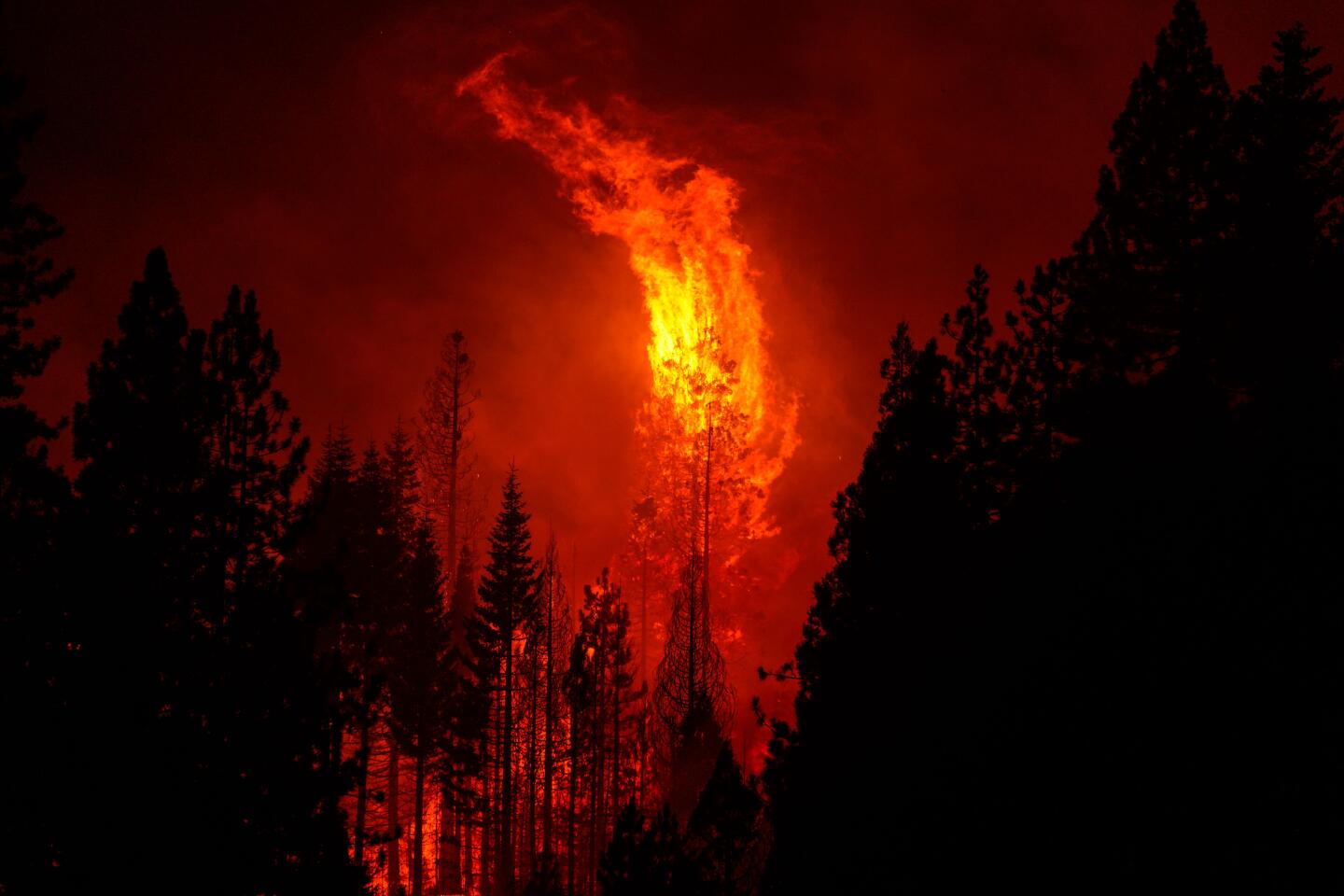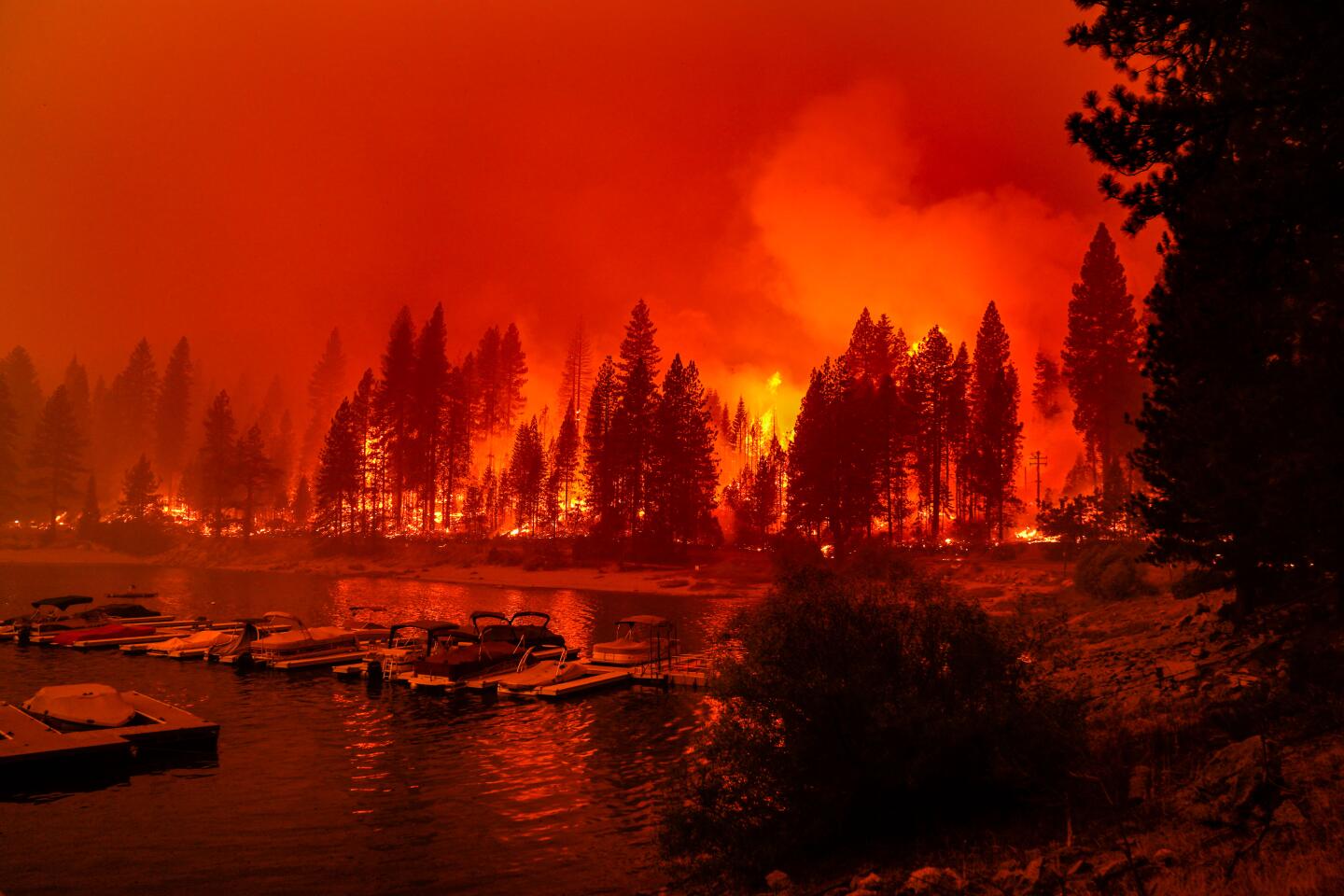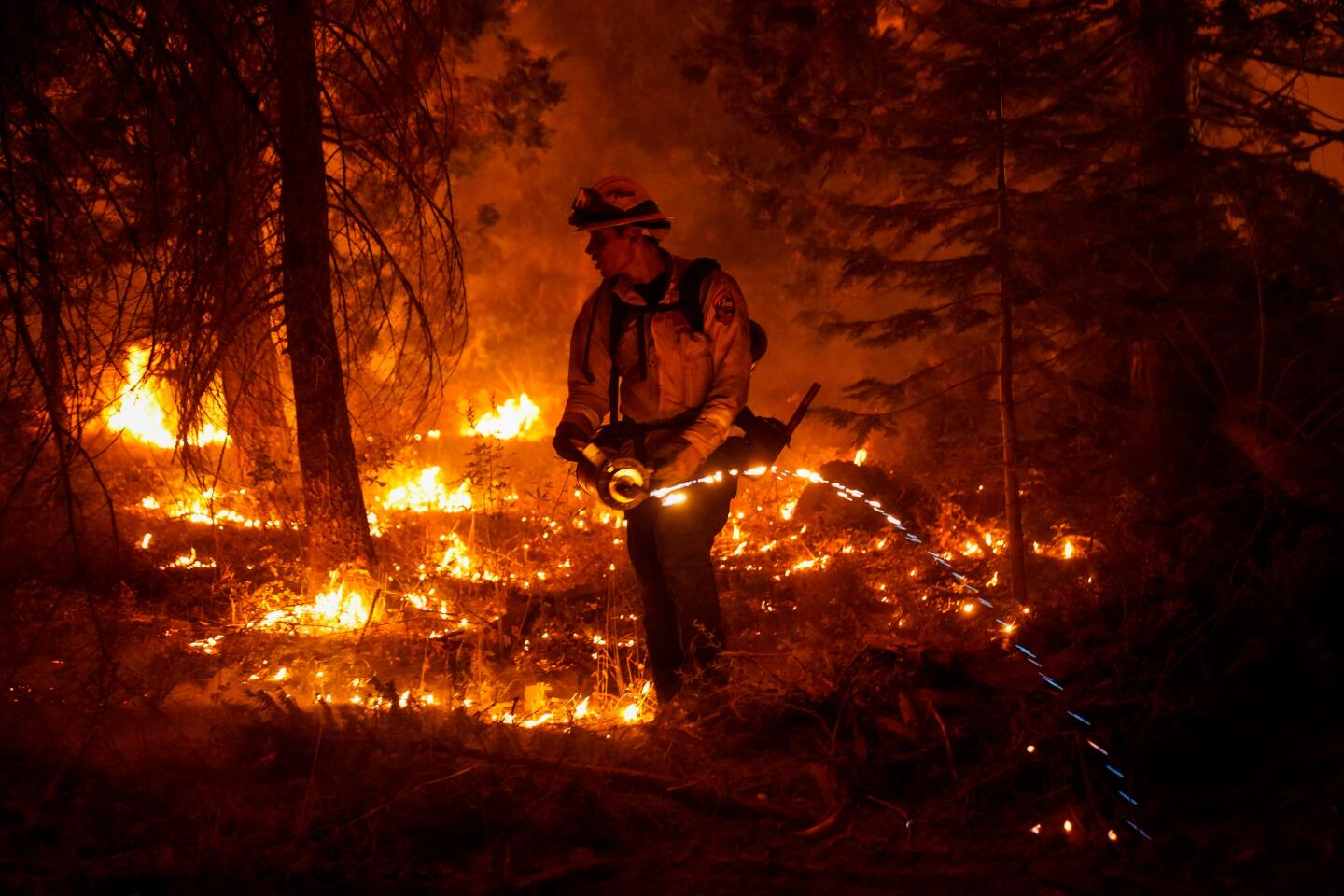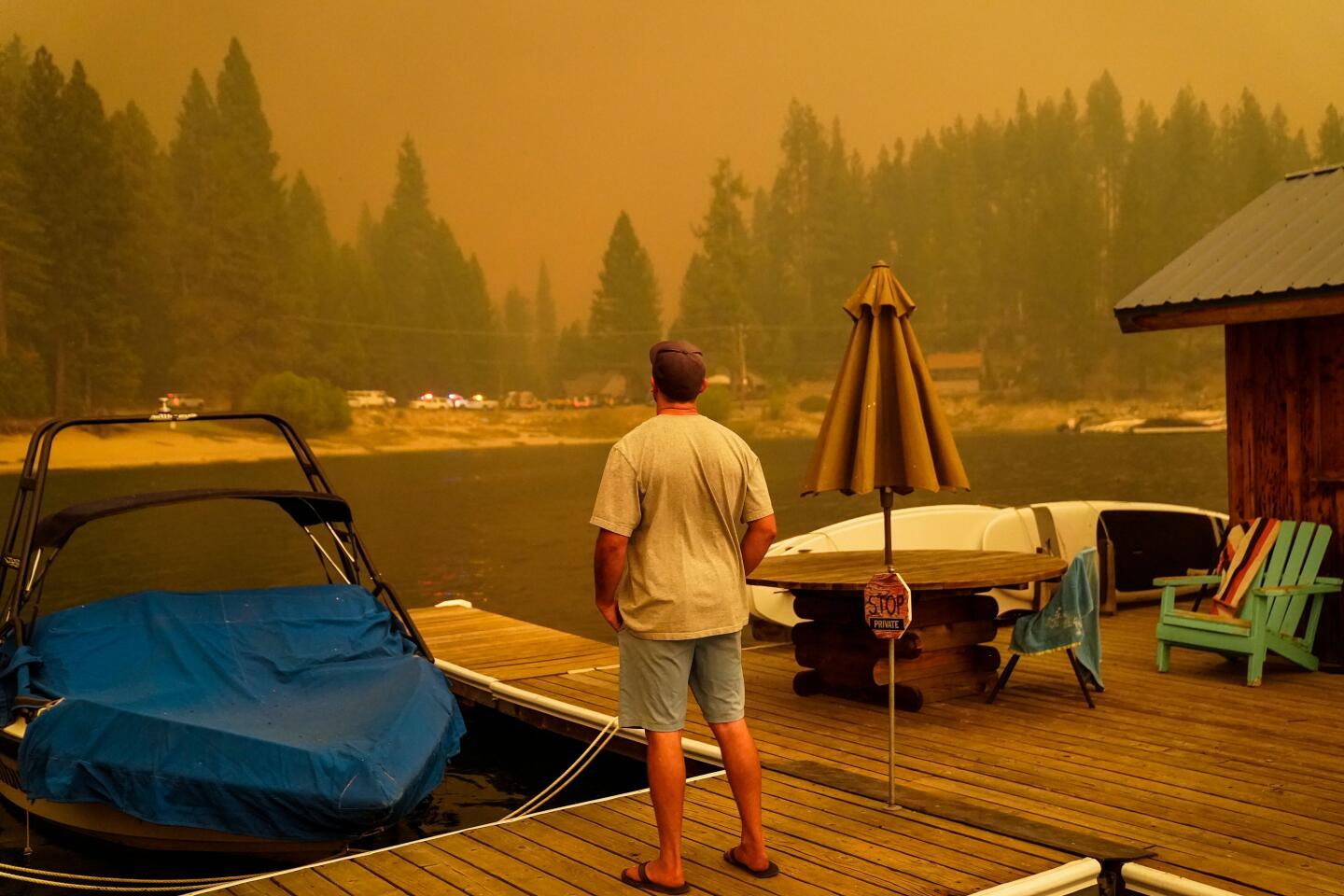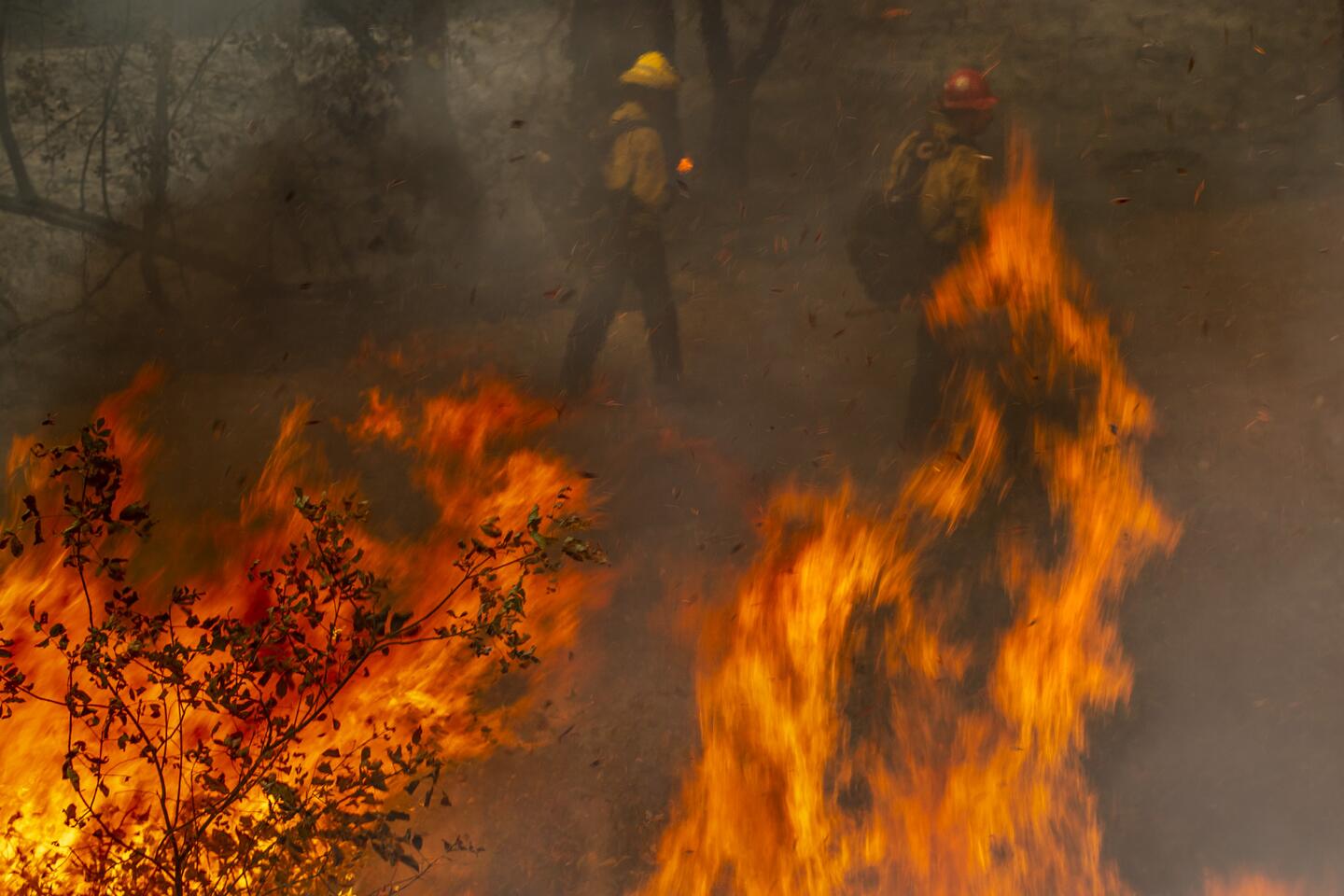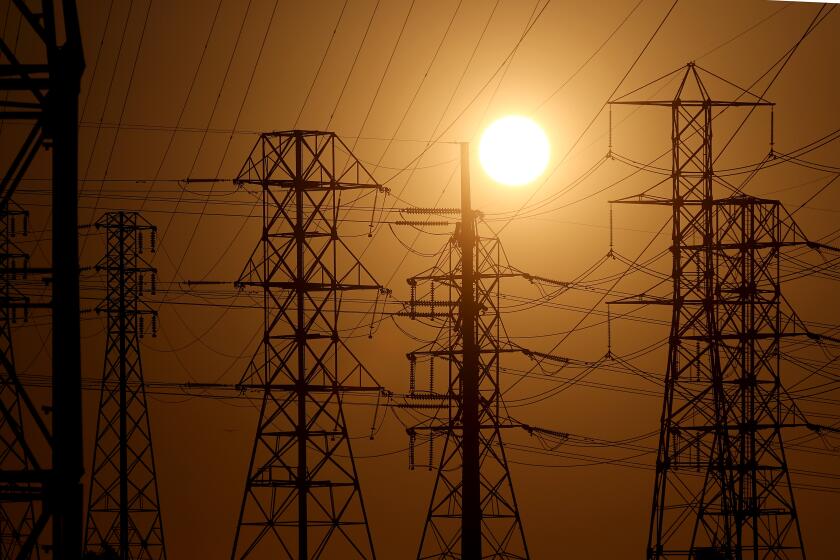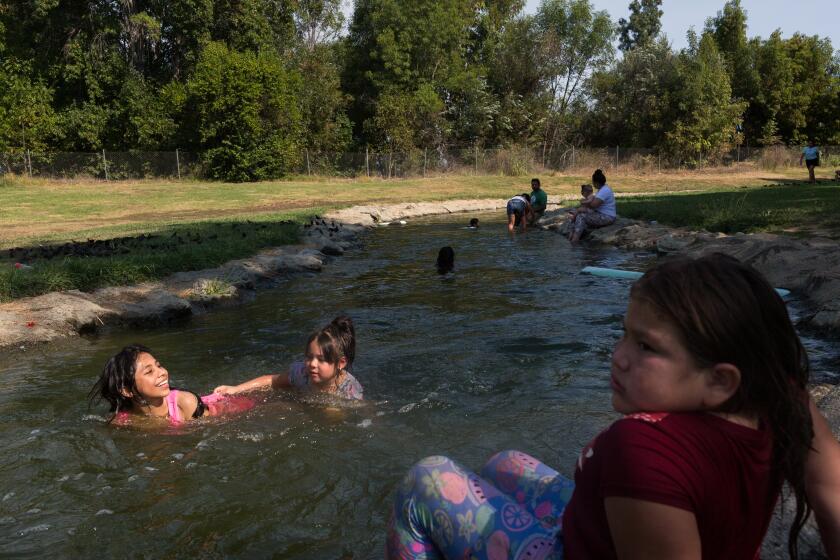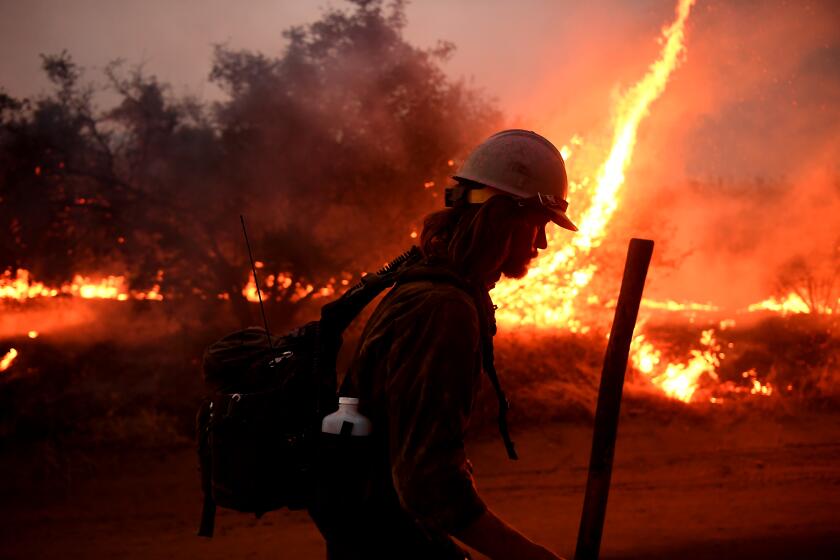As fire ‘engulfed everything’ around campers, an air rescue like no other in the Sierra
- Share via
The call came in to the California National Guard at 3:15 p.m. Saturday.
A fast-moving brush fire had choked off the only road out of a popular recreation area in the Sierra National Forest. Hundreds of campers were trapped.
The Creek fire, which ignited Friday evening about six miles to the west, had jumped the San Joaquin River and made a run toward the Mammoth Pool Reservoir, where people were enjoying the Labor Day weekend.
“As fire crews and law enforcement were trying to get everybody out, the fire spotted and then basically grew,” said Alex Olow of the U.S. Fire Service. “Exiting out the road wasn’t safe, so people were asked to shelter in place.”
Authorities quickly determined the only way to evacuate them was with a massive airlift done at night as the fire burned unchecked.
That marked the start of a massive multiagency rescue that some officials described as unprecedented in size and scope.
Blackouts could take place during peak evening hours, 5 to 9 p.m., according to the California Independent System Operator, which runs the power grid for much of the state.
“Our focus was getting the helicopters in and getting as many people out as quickly as possible to save lives,” said Col. Jesse Miller, deputy commander for joint task force domestic support with the California National Guard.
The Guard worked to assemble its teams and line up resources. But by the time it was in a position to send in aircraft, the fire had essentially reached the Mammoth Pool area, said Col. Dave Hall, commander of the 40th Combat Aviation Brigade, which flew the mission.
“The smoke column’s naturally high, very difficult,” Hall recalled. “And we needed some of that essentially to burn down a little bit in order for us to effect a safe rescue.”
At 6:30 p.m., when conditions improved slightly, the Guard launched a CH-47 Chinook and a UH-60 Blackhawk from about 60 kilometers away in Northern California. The helicopters staged in Fresno to receive guidance about where they could approach to pick people up.
A remotely piloted MQ-9 aircraft operated by the Guard’s 163rd Wing based at March Air Reserve Base worked above the site, helping to scout conditions. Personnel identified a small clearing alongside a boat launch road that could be used as an emergency landing zone.
About 8:20 p.m., the helicopters landed at Mammoth Pool.
The seven crew members were greeted by more than 200 campers, many of them clustered on a dock near the boat launch, Hall said. Some had suffered injuries including scrapes, burns and possible broken bones.
But they were ecstatic.
“I spoke with the crew members afterward and they said it was one of the greatest missions they’ve ever done just because of the feeling of relief the individuals who were rescued had,” Hall said. “They were literally giving the crew chiefs hugs as they were boarding the helicopter.”
Some of those at Mammoth Pool described a terrifying scene of driving through flames and finding shelter wherever they could.
Jeremy Remington told ABC30 that he and his family were boating when they went to fill their chest with ice. In less than 30 minutes, he said, the fire was roaring toward them.
“The fire completely engulfed everything, all around us,” he said, adding that they poured water on their shirts and used them to cover their faces as protection against the smoke and heat.
Two people had suffered life-threatening injuries. They were put in the helicopters first. Then came the 19 “walking wounded,” who needed hospital care but were not considered critical. Crews also prioritized children and those with underlying health conditions, officials said.
“Their focus was on rescuing them, getting them from the point of danger to point of safety and then getting them into the hands of the emergency medical professionals that were on the ground,” Miller said.
Crews dropped off the passengers at Fresno Yosemite International Airport, where a makeshift triage site was set up. There, paramedics assessed injuries and arranged for people to be taken to hospitals, while other emergency workers made sure those who were displaced were matched with shelters.
The helicopters then returned to Mammoth Pool to pick up another load.
By then, between the darkness and thick smoke, conditions had deteriorated again. Not knowing if they’d be able to make it back a third time, the crews loaded as many people into the helicopters as they could — more than 100 passengers in the Chinook and 21 in the Black Hawk, Hall said.
Luckily, they were able to make one more trip, and everyone who wanted to leave was airlifted. Two people chose to stay behind, Olow said.
Sunday will be slightly hotter than Saturday in Southern California -- and that likely means more heat wave records.
When the mission was completed about 3 a.m., 214 people and 11 pets had been rescued, Hall said. At least 21 people were taken to hospitals.
“In my career with the Army National Guard, I have not seen an evacuation of this size nor have I heard of anything similar with regards to a fire incident,” Hall said. “So in my book, this is one of the largest events ever.”
But it might not be the last, he said. The fire was 0% contained late Sunday morning and had charred at least 45,500 acres, as evacuation orders continued to multiply.
“We do believe there will be more rescues,” Hall said. “We are posturing crews day and night to support potential rescues. What is unique about the terrain up there is it is a very, very popular camping site and also backpacking site. And because the fire travels very quickly, it is very possible for backpackers and hikers to potentially be stranded.”
Miller credited the work of scores of agencies, including the Madera and Fresno County sheriff’s offices and fire districts, the California Department of Forestry and Fire Protection, the California Office of Emergency Services and the California Highway Patrol, for the success of the daring rescue.
The cities of Fresno and Clovis also assisted in finding shelters, as did the 1106 TAMG, a Fresno aviation maintenance unit that opened its armory to those who were evacuated or injured, Miller said. Another Fresno-based Guard unit, the 144th Fighter Wing, provided ground support.
“All these agencies and people had to come together over a few short hours to figure out the best resources and capability to get in there to save these people, which is pretty remarkable,” he said.
The 7,000-acre El Dorado fire was sparked by smoke devices used during a gender-reveal party at a Yucaipa, Calif., park.
There was also an unexpected silver lining in the form of the COVID-19 pandemic.
Huntington Lake Fire Chief Christopher Donnelly said it was a blessing in disguise that the fire — which he had anticipated for years due to brush overgrowth — happened during the outbreak. Though hundreds of residents were evacuated, more than 10,000 people usually visit the Huntington Lake area during Labor Day weekend.
“Thank god for COVID,” Donnelly said. “All of our campgrounds are closed, Scout camps are closed.”
Times staff writers Laura Newberry and Thomas Curwen contributed to this report.
More to Read
Sign up for Essential California
The most important California stories and recommendations in your inbox every morning.
You may occasionally receive promotional content from the Los Angeles Times.
